【OpenGauss源码学习 —— 列存储(创建表)】
列存储
- 什么是列存储?
- 语法实现
- 语法格式
- 参数说明
- 示例
- 源码分析(创建表)
- 语法层(Gram.y)
- 子模块(utility.cpp)
- 总结
声明:本文的部分内容参考了他人的文章。在编写过程中,我们尊重他人的知识产权和学术成果,力求遵循合理使用原则,并在适用的情况下注明引用来源。
本文主要参考了 OpenGauss1.1.0 的开源代码和《OpenGauss数据库源码解析》一书以及OpenGauss社区学习文档
什么是列存储?
列存储是一种优化技术,用于在数据库系统中存储和查询大量数据。与传统的行存储方式不同,列存储将每个列的数据分别存储在独立的存储单元中,而不是按照行的方式存储。这种存储方式在分析性查询、聚合操作和大规模数据处理等场景下具有很大的优势。
行、列存储模型各有优劣,建议根据实际情况选择。通常openGauss用于OLTP(联机事务处理)场景的数据库,默认使用行存储,仅对执行复杂查询且数据量大的OLAP(联机分析处理)场景时,才使用列存储。默认情况下,创建的表为行存储。行存储和列存储的差异如下图所示:
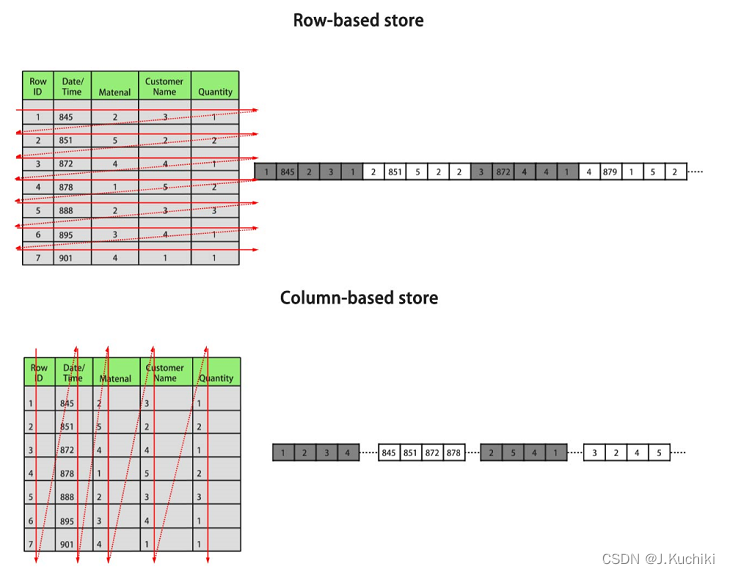
上图中,左上为行存表,右上为行存表在硬盘上的存储方式。左下为列存表,右下为列存表在硬盘上的存储方式。
列存储的特点和优势:
- 压缩效率高:由于相同类型的数据在列中是连续存储的,可以采用更加高效的压缩算法,从而减少存储空间的使用。
- 数据读取效率高:在查询中只加载需要的列,减少了不必要的数据传输,提高了查询效率。
- 聚合操作效率高:在列存储中,同一列的数据相邻存储,这样在进行聚合操作时只需要对该列中的数据进行计算,减少了不必要的读取和计算。
- 列存储适合分析性查询:分析性查询通常涉及多个列的聚合和筛选操作,列存储的存储方式更适合这种场景,可以提高查询效率。
- 适用于大规模数据处理:列存储在大规模数据处理、数据仓库等场景中具有明显的性能优势,能够更好地支持复杂的分析任务。
列存储相比于行存储的优点和缺点如下:
| 存储模型 | 优点 | 缺点 |
|---|---|---|
| 行存 | 数据被保存在一起。INSERT/UPDATE容易。 | 选择(SELECT)时即使只涉及某几列,所有数据也都会被读取。 |
| 列存 | 1. 查询时只有涉及到的列会被读取。 2. 投影(Projection)很高效。 3. 任何列都能作为索引。 | 1. 选择完成时,被选择的列要重新组装。 2. INSERT/UPDATE比较麻烦。 |
一般情况下,如果表的字段比较多(大宽表),查询中涉及到的列不多的情况下,适合列存储。如果表的字段个数比较少,查询大部分字段,那么选择行存储比较好。
| 存储类型 | 适用场景 |
|---|---|
| 行存 | 1. 点查询(返回记录少,基于索引的简单查询)。 2. 增、删、改操作较多的场景。 3. 频繁的更新、少量的插入。 |
| 列存 | 1. 统计分析类查询 (关联、分组操作较多的场景)。 2. 即席查询(查询条件不确定,行存表扫描难以使用索引)。 3. 一次性大批量插入。 4. 表列数较多,建议使用列存表。 5. 如果每次查询时,只涉及了表的少数(<50%总列数)几个列,建议使用列存表。 |
语法实现
语法格式
CREATE TABLE table_name (column_name data_type [, ... ])[ WITH ( ORIENTATION = value) ];
参数说明
| 参数 | 说明 |
|---|---|
| table_name | 要创建的表名。 |
| column_name | 新表中要创建的字段名。 |
| data_type | 字段的数据类型。 |
| ORIENTATION | 指定表数据的存储方式,即行存方式、列存方式,该参数设置成功后就不再支持修改。 取值范围: ROW,表示表的数据将以行式存储。 行存储适合于OLTP业务,适用于点查询或者增删操作较多的场景。 ROW,表示表的数据将以行式存储。 列存储适合于数据仓库业务,此类型的表上会做大量的汇聚计算,且涉及的列操作较少。 |
示例
来看一下官方文档给出的两个实际案例:
- 不指定ORIENTATION参数时,表默认为行存表。例如:
openGauss=# CREATE TABLE customer_test1
(state_ID CHAR(2),state_NAME VARCHAR2(40),area_ID NUMBER
);--删除表
openGauss=# DROP TABLE customer_test1;
- 创建列存表时,需要指定ORIENTATION参数。例如:
openGauss=# CREATE TABLE customer_test2
(state_ID CHAR(2),state_NAME VARCHAR2(40),area_ID NUMBER
)
WITH (ORIENTATION = COLUMN);--删除表
openGauss=# DROP TABLE customer_test2;
源码分析(创建表)
语法层(Gram.y)
接下来从代码实现层面来看看吧,创建列存表所涉及的语法代码如下:
注:Gram.y文件是YACC(Yet Another Compiler Compiler)工具生成的语法分析器的输入文件,用于解析SQL语句或其他领域特定语言。
columnDef: ColId Typename ColCmprsMode create_generic_options ColQualList{ColumnDef *n = makeNode(ColumnDef);n->colname = $1;n->typname = $2;n->inhcount = 0;n->is_local = true;n->is_not_null = false;n->is_from_type = false;n->storage = 0;n->cmprs_mode = $3;n->raw_default = NULL;n->cooked_default = NULL;n->collOid = InvalidOid;n->fdwoptions = $4;n->clientLogicColumnRef=NULL;SplitColQualList($5, &n->constraints, &n->collClause,&n->clientLogicColumnRef, yyscanner);$$ = (Node *)n;};
下面我们来分析一下这段代码:
columnDef::这是一个非终结符,表示列定义的语法规则开始。ColId Typename ColCmprsMode create_generic_options ColQualList:这是规则的产生式,由一系列非终结符组成,代表列定义的各个部分。{ }:这是动作部分的开始和结束,包含在花括号内的代码会在解析这个规则时执行。ColumnDef *n = makeNode(ColumnDef);:在这里,创建了一个ColumnDef类型的节点,并将其指针赋值给 n。n->colname = $1;:将解析得到的列名(通过$1表示)赋值给列定义的节点的colname字段。n->typname = $2;:将解析得到的类型名赋值给列定义的节点的typname字段。n->inhcount = 0;:将继承计数字段初始化为 0。n->is_local = true;:设置is_local字段为true。n->is_not_null = false;:设置is_not_null字段为false。n->is_from_type = false;:设置is_from_type字段为false。n->storage = 0;:将存储字段初始化为 0。n->cmprs_mode = $3;:将解析得到的压缩模式赋值给cmprs_mode字段。n->raw_default = NULL;:将默认原始值字段初始化为NULL。n->cooked_default = NULL;:将默认经过处理的值字段初始化为NULL。n->collOid = InvalidOid;:将排序规则OID初始化为InvalidOid。n->fdwoptions = $4;:将解析得到的外部数据包含选项赋值给fdwoptions字段。n->clientLogicColumnRef=NULL;:将客户逻辑列引用字段初始化为NULL。SplitColQualList($5, &n->constraints, &n->collClause, &n->clientLogicColumnRef, yyscanner);:调用函数SplitColQualList,将解析得到的列限制、排序规则和客户逻辑列引用传递给相应的字段。$$ = (Node *)n;:将构造的列定义节点 n 赋值给规则的结果。;:表示语法规则结束。
其中,ColumnDef 结构一般在数据库的源代码中进行定义。它通常是作为系统内部数据结构的一部分,用于表示用户在创建表时定义的列的属性。
ColumnDef 结构源码如下:(路径:src/include/nodes/parsenodes_common.h)
/** ColumnDef - 列定义(用于各种创建操作)** 如果列有默认值,我们可以在“原始”形式(未经转换的解析树)或“处理过”形式(经过解析分析的可执行表达式树)中拥有该值的表达式,* 这取决于如何创建此 ColumnDef 节点(通过解析还是从现有关系继承)。在同一个节点中不应同时存在两者!** 类似地,我们可以在原始形式(表示为 CollateClause,arg==NULL)或处理过形式(校对的 OID)中拥有 COLLATE 规范。** 约束列表可能在由 gram.y 生成的原始解析树中包含 CONSTR_DEFAULT 项,但 transformCreateStmt 将删除该项并设置 raw_default。* CONSTR_DEFAULT 项不应出现在任何后续处理中。*/
typedef struct ColumnDef {NodeTag type; /* 结点类型标记 */char *colname; /* 列名 */TypeName *typname; /* 列的数据类型 */int kvtype; /* 如果使用 KV 存储,kv 属性类型 */int inhcount; /* 列继承的次数 */bool is_local; /* 列是否有本地(非继承)定义 */bool is_not_null; /* 是否指定 NOT NULL 约束? */bool is_from_type; /* 列定义来自表类型 */bool is_serial; /* 列是否是序列类型 */char storage; /* attstorage 设置,或默认为 0 */int8 cmprs_mode; /* 应用于此列的压缩方法 */Node *raw_default; /* 默认值(未经转换的解析树) */Node *cooked_default; /* 默认值(经过转换的表达式树) */CollateClause *collClause; /* 未经转换的 COLLATE 规范,如果有的话 */Oid collOid; /* 校对 OID(如果未设置,则为 InvalidOid) */List *constraints; /* 列的其他约束 */List *fdwoptions; /* 每列的 FDW 选项 */ClientLogicColumnRef *clientLogicColumnRef; /* 客户端逻辑引用 */Position *position;Form_pg_attribute dropped_attr; /* 在创建类似表 OE 过程中被删除的属性的结构 */
} ColumnDef; 这里重点来看看n->cmprs_mode = $3;也就是列的压缩方法是如何定义的:
ColCmprsMode: /* 列压缩模式规则 */DELTA {$$ = ATT_CMPR_DELTA;} /* delta 压缩 */| PREFIX {$$ = ATT_CMPR_PREFIX;} /* 前缀压缩 */| DICTIONARY {$$ = ATT_CMPR_DICTIONARY;} /* 字典压缩 */| NUMSTR {$$ = ATT_CMPR_NUMSTR;} /* 数字-字符串压缩 */| NOCOMPRESS {$$ = ATT_CMPR_NOCOMPRESS;} /* 不压缩 */| /* EMPTY */ {$$ = ATT_CMPR_UNDEFINED;} /* 用户未指定 */
;
以上代码是 opengauss 数据库系统中定义列压缩模式的规则。每行代码对应了一种列压缩模式,例如 DELTA 压缩、前缀压缩、字典压缩等。在解析和创建表的过程中,用户可以通过指定列的压缩模式来定义对该列的数据压缩方式。根据语法规则,解析器会将不同的压缩模式转换为对应的内部表示值,以便在内部进行处理。
子模块(utility.cpp)
函数 CreateCommand(路径:src/gausskernel/process/tcop/utility.cpp),用于处理创建表(CREATE 命令)的操作,源码如下:
/** Notice: parse_tree could be from cached plan, do not modify it under other memory context*/
#ifdef PGXC
void CreateCommand(CreateStmt *parse_tree, const char *query_string, ParamListInfo params, bool is_top_level, bool sent_to_remote)
#else
void CreateCommand(CreateStmt* parse_tree, const char* query_string, ParamListInfo params, bool is_top_level)
#endif{List* stmts = NIL;ListCell* l = NULL;Oid rel_oid;
#ifdef PGXCbool is_temp = false;bool is_object_temp = false;PGXCSubCluster* sub_cluster = NULL;char* tablespace_name = NULL;char relpersistence = RELPERSISTENCE_PERMANENT;bool table_is_exist = false;char* internal_data = NULL;List* uuids = (List*)copyObject(parse_tree->uuids);char* first_exec_node = NULL;bool is_first_node = false;char* query_string_with_info = (char*)query_string;char* query_string_with_data = (char*)query_string;if (IS_PGXC_COORDINATOR && !IsConnFromCoord()) {first_exec_node = find_first_exec_cn();is_first_node = (strcmp(first_exec_node, g_instance.attr.attr_common.PGXCNodeName) == 0);}
#endif/** DefineRelation() needs to know "isTopLevel"* by "DfsDDLIsTopLevelXact" to prevent "create hdfs table" running* inside a transaction block.*/if (IS_PGXC_COORDINATOR && !IsConnFromCoord())u_sess->exec_cxt.DfsDDLIsTopLevelXact = is_top_level;/* Run parse analysis ... */if (u_sess->attr.attr_sql.enable_parallel_ddl)stmts = transformCreateStmt((CreateStmt*)parse_tree, query_string, NIL, true, is_first_node);elsestmts = transformCreateStmt((CreateStmt*)parse_tree, query_string, NIL, false);/** If stmts is NULL, then the table is exists.* we need record that for searching the group of table.*/if (stmts == NIL) {table_is_exist = true;/** Just return here, if we continue* to send if not exists stmt, may* cause the inconsistency of metadata.* If we under xc_maintenance_mode, we can do* this to slove some problem of inconsistency.*/if (u_sess->attr.attr_common.xc_maintenance_mode == false)return;}#ifdef PGXCif (IS_MAIN_COORDINATOR) {/** Scan the list of objects.* Temporary tables are created on Datanodes only.* Non-temporary objects are created on all nodes.* In case temporary and non-temporary objects are mized return an error.*/bool is_first = true;foreach (l, stmts) {Node* stmt = (Node*)lfirst(l);if (IsA(stmt, CreateStmt)) {CreateStmt* stmt_loc = (CreateStmt*)stmt;sub_cluster = stmt_loc->subcluster;tablespace_name = stmt_loc->tablespacename;relpersistence = stmt_loc->relation->relpersistence;is_object_temp = stmt_loc->relation->relpersistence == RELPERSISTENCE_TEMP;internal_data = stmt_loc->internalData;if (is_object_temp)u_sess->exec_cxt.hasTempObject = true;if (is_first) {is_first = false;if (is_object_temp)is_temp = true;} else {if (is_object_temp != is_temp)ereport(ERROR,(errcode(ERRCODE_FEATURE_NOT_SUPPORTED),errmsg("CREATE not supported for TEMP and non-TEMP objects"),errdetail("You should separate TEMP and non-TEMP objects")));}} else if (IsA(stmt, CreateForeignTableStmt)) {
#ifdef ENABLE_MULTIPLE_NODESvalidate_streaming_engine_status(stmt);
#endifif (in_logic_cluster()) {CreateStmt* stmt_loc = (CreateStmt*)stmt;sub_cluster = stmt_loc->subcluster;}/* There are no temporary foreign tables */if (is_first) {is_first = false;} else {if (!is_temp)ereport(ERROR,(errcode(ERRCODE_FEATURE_NOT_SUPPORTED),errmsg("CREATE not supported for TEMP and non-TEMP objects"),errdetail("You should separate TEMP and non-TEMP objects")));}} else if (IsA(stmt, CreateSeqStmt)) {CreateSeqStmt* sstmt = (CreateSeqStmt*)stmt;Const* n = makeConst(INT8OID, -1, InvalidOid, sizeof(int64), Int64GetDatum(sstmt->uuid), false, true);uuids = lappend(uuids, n);}}/* Package the internalData after the query_string */if (internal_data != NULL) {query_string_with_data = append_internal_data_to_query(internal_data, query_string);}/** Now package the uuids message that create table on RemoteNode need.*/if (uuids != NIL) {char* uuid_info = nodeToString(uuids);AssembleHybridMessage(&query_string_with_info, query_string_with_data, uuid_info);} elsequery_string_with_info = query_string_with_data;}/** If I am the main execute CN but not CCN,* Notify the CCN to create firstly, and then notify other CNs except me.*/if (IS_PGXC_COORDINATOR && !IsConnFromCoord()) {if (u_sess->attr.attr_sql.enable_parallel_ddl && !is_first_node) {if (!sent_to_remote) {RemoteQuery* step = makeNode(RemoteQuery);step->combine_type = COMBINE_TYPE_SAME;step->sql_statement = (char*)query_string_with_info;if (is_object_temp)step->exec_type = EXEC_ON_NONE;elsestep->exec_type = EXEC_ON_COORDS;step->exec_nodes = NULL;step->is_temp = is_temp;ExecRemoteUtility_ParallelDDLMode(step, first_exec_node);pfree_ext(step);}}}if (u_sess->attr.attr_sql.enable_parallel_ddl) {if (IS_PGXC_COORDINATOR && !IsConnFromCoord() && !is_first_node)stmts = transformCreateStmt((CreateStmt*)parse_tree, query_string, uuids, false);}
#endif#ifdef PGXC/** Add a RemoteQuery node for a query at top level on a remote* Coordinator, if not already done so*/if (!sent_to_remote) {if (u_sess->attr.attr_sql.enable_parallel_ddl && !is_first_node)stmts = AddRemoteQueryNode(stmts, query_string_with_info, EXEC_ON_DATANODES, is_temp);elsestmts = AddRemoteQueryNode(stmts, query_string_with_info, CHOOSE_EXEC_NODES(is_object_temp), is_temp);if (IS_PGXC_COORDINATOR && !IsConnFromCoord() &&(sub_cluster == NULL || sub_cluster->clustertype == SUBCLUSTER_GROUP)) {const char* group_name = NULL;Oid group_oid = InvalidOid;/** If TO-GROUP clause is specified when creating table, we* only have to add required datanode in remote DDL execution*/if (sub_cluster != NULL) {ListCell* lc = NULL;foreach (lc, sub_cluster->members) {group_name = strVal(lfirst(lc));}} else if (in_logic_cluster() && !table_is_exist) {/** for CreateForeignTableStmt ,* CreateTableStmt with user not attached to logic cluster*/group_name = PgxcGroupGetCurrentLogicCluster();if (group_name == NULL) {ereport(ERROR, (errcode(ERRCODE_UNDEFINED_OBJECT), errmsg("Cannot find logic cluster.")));}} else {Oid tablespace_id = InvalidOid;bool dfs_tablespace = false;if (tablespace_name != NULL) {tablespace_id = get_tablespace_oid(tablespace_name, false);} else {tablespace_id = GetDefaultTablespace(relpersistence);}/* Determine if we are working on a HDFS table. */dfs_tablespace = IsSpecifiedTblspc(tablespace_id, FILESYSTEM_HDFS);/** If TO-GROUP clause is not specified we are using the installation group to* distribute table.** For HDFS table/Foreign Table we don't refer default_storage_nodegroup* to make table creation.*/if (table_is_exist) {Oid rel_id = RangeVarGetRelid(((CreateStmt*)parse_tree)->relation, NoLock, true);if (OidIsValid(rel_id)) {Oid table_groupoid = get_pgxc_class_groupoid(rel_id);if (OidIsValid(table_groupoid)) {group_name = get_pgxc_groupname(table_groupoid);}}if (group_name == NULL) {group_name = PgxcGroupGetInstallationGroup();}} else if (dfs_tablespace || IsA(parse_tree, CreateForeignTableStmt)) {group_name = PgxcGroupGetInstallationGroup();} else if (strcmp(u_sess->attr.attr_sql.default_storage_nodegroup, INSTALLATION_MODE) == 0 ||u_sess->attr.attr_common.IsInplaceUpgrade) {group_name = PgxcGroupGetInstallationGroup();} else {group_name = u_sess->attr.attr_sql.default_storage_nodegroup;}/* If we didn't identify an installation node group error it out out */if (group_name == NULL) {ereport(ERROR,(errcode(ERRCODE_UNDEFINED_OBJECT),errmsg("Installation node group is not defined in current cluster")));}}/* Fetch group name */group_oid = get_pgxc_groupoid(group_name);if (!OidIsValid(group_oid)) {ereport(ERROR,(errcode(ERRCODE_UNDEFINED_OBJECT), errmsg("Target node group \"%s\" doesn't exist", group_name)));}if (in_logic_cluster()) {check_logic_cluster_create_priv(group_oid, group_name);} else {/* No limit in logic cluster mode *//* check to block non-redistribution process creating table to old group */if (!u_sess->attr.attr_sql.enable_cluster_resize) {char in_redistribution = get_pgxc_group_redistributionstatus(group_oid);if (in_redistribution == 'y') {ereport(ERROR,(errcode(ERRCODE_FEATURE_NOT_SUPPORTED),errmsg("Unable to create table on old installation group \"%s\" while in cluster ""resizing.",group_name)));}}}/* Build exec_nodes to table creation */const int total_len = list_length(stmts);Node* node = (Node*)list_nth(stmts, (total_len - 1));// *node* should be a RemoteQuery NodeAssertEreport(query_string != NULL, MOD_EXECUTOR, "Node type is not remote type");RemoteQuery* rquery = (RemoteQuery*)node;// *exec_nodes* should be a NULL pointerAssertEreport(!rquery->exec_nodes, MOD_EXECUTOR, "remote query is not DN");rquery->exec_nodes = makeNode(ExecNodes);/* Set group oid here for sending bucket map to dn */rquery->exec_nodes->distribution.group_oid = group_oid;if (find_hashbucket_options(stmts)) {rquery->is_send_bucket_map = true;}/** Check node group permissions, we only do such kind of ACL check* for user-defined nodegroup(none-installation)*/AclResult acl_result = pg_nodegroup_aclcheck(group_oid, GetUserId(), ACL_CREATE);if (acl_result != ACLCHECK_OK) {aclcheck_error(acl_result, ACL_KIND_NODEGROUP, group_name);}/** Notice!!* In cluster resizing stage we need special processing logics in table creation as:* [1]. create table delete_delta ... to group old_group on all DN* [2]. display pgxc_group.group_members* [3]. drop table delete_delta ==> drop delete_delta on all DN** So, as normal, when target node group's status is marked as 'installation' or* 'redistribution', we have to issue a full-DN create table request, remeber* pgxc_class.group_members still reflects table's logic distribution to tell pgxc* planner to build Scan operator in multi_nodegroup way. The reason we have to so is* to be compatible with current gs_switch_relfilenode() invokation in cluster expand* and shrunk mechanism.*/if (need_full_dn_execution(group_name)) {/* Sepcial path, issue full-DN create table request */rquery->exec_nodes->nodeList = GetAllDataNodes();} else {/* Normal path, issue only needs DNs in create table request */Oid* members = NULL;int nmembers = 0;nmembers = get_pgxc_groupmembers(group_oid, &members);/* Append nodeId to exec_nodes */rquery->exec_nodes->nodeList = GetNodeGroupNodeList(members, nmembers);pfree_ext(members);if (uuids && nmembers < u_sess->pgxc_cxt.NumDataNodes) {char* create_seqs;RemoteQuery* step;/* Create table in NodeGroup with sequence. */create_seqs = assemble_create_sequence_msg(stmts, uuids);step = make_remote_query_for_seq(rquery->exec_nodes, create_seqs);stmts = lappend(stmts, step);}}}}
#endifif (uuids != NIL) {list_free_deep(uuids);uuids = NIL;}/* ... and do it */foreach (l, stmts) {Node* stmt = (Node*)lfirst(l);if (IsA(stmt, CreateStmt)) {Datum toast_options;static const char* const validnsps[] = HEAP_RELOPT_NAMESPACES;/* forbid user to set or change inner options */ForbidOutUsersToSetInnerOptions(((CreateStmt*)stmt)->options);/* Create the table itself */rel_oid = DefineRelation((CreateStmt*)stmt,((CreateStmt*)stmt)->relkind == RELKIND_MATVIEW ?RELKIND_MATVIEW : RELKIND_RELATION,InvalidOid);/** Let AlterTableCreateToastTable decide if this one* needs a secondary relation too.*/CommandCounterIncrement();/* parse and validate reloptions for the toast table */toast_options =transformRelOptions((Datum)0, ((CreateStmt*)stmt)->options, "toast", validnsps, true, false);(void)heap_reloptions(RELKIND_TOASTVALUE, toast_options, true);AlterTableCreateToastTable(rel_oid, toast_options, ((CreateStmt *)stmt)->oldToastNode);AlterCStoreCreateTables(rel_oid, toast_options, (CreateStmt*)stmt);AlterDfsCreateTables(rel_oid, toast_options, (CreateStmt*)stmt);
#ifdef ENABLE_MULTIPLE_NODESDatum reloptions = transformRelOptions((Datum)0, ((CreateStmt*)stmt)->options, NULL, validnsps, true, false);StdRdOptions* std_opt = (StdRdOptions*)heap_reloptions(RELKIND_RELATION, reloptions, true);if (StdRelOptIsTsStore(std_opt)) {create_ts_store_tables(rel_oid, toast_options);}/* create partition policy if ttl or period defined */create_part_policy_if_needed((CreateStmt*)stmt, rel_oid);
#endif /* ENABLE_MULTIPLE_NODES */} else if (IsA(stmt, CreateForeignTableStmt)) {/* forbid user to set or change inner options */ForbidOutUsersToSetInnerOptions(((CreateStmt*)stmt)->options);/* if this is a log ft, check its definition */check_log_ft_definition((CreateForeignTableStmt*)stmt);/* Create the table itself */if (pg_strcasecmp(((CreateForeignTableStmt *)stmt)->servername, STREAMING_SERVER) == 0) {/* Create stream */rel_oid = DefineRelation((CreateStmt*)stmt, RELKIND_STREAM, InvalidOid);} else {/* Create foreign table */rel_oid = DefineRelation((CreateStmt*)stmt, RELKIND_FOREIGN_TABLE, InvalidOid);}CreateForeignTable((CreateForeignTableStmt*)stmt, rel_oid);} else {if (IsA(stmt, AlterTableStmt))((AlterTableStmt*)stmt)->fromCreate = true;/* Recurse for anything else */ProcessUtility(stmt,query_string_with_info,params,false,None_Receiver,
#ifdef PGXCtrue,
#endif /* PGXC */NULL);}/* Need CCI between commands */if (lnext(l) != NULL)CommandCounterIncrement();}/* reset */t_thrd.xact_cxt.inheritFileNode = false;parse_tree->uuids = NIL;
}
CreateCommand 函数负责处理 CREATE TABLE、CREATE FOREIGN TABLE 等创建表的 SQL 语句。下面简单介绍一下CreateCommand 函数的执行流程:
- 在开始之前,根据宏定义,函数有不同的参数,具体分为 PGXC(PostgreSQL扩展性集群)模式和非 PGXC 模式。在 PGXC 模式下,还有一些额外的变量用于并行 DDL(数据定义语言)执行和集群扩展/缩减。
- 这个函数首先初始化一些变量,包括一些用于 PGXC 模式下的信息,例如集群信息、表空间名、表的持久性等。
- 设置当前会话的状态,以便 DefineRelation() 函数判断是否需要执行 DDL 语句。对于 PGXC 模式,还会设置并行 DDL 的状态。
- 进行解析分析,将原始的 parse_tree 转化为一个列表 stmts,其中包含了各种 DDL 语句。解析分析是数据库执行 DDL 语句的第一步,将原始的语法树转换为可以执行的逻辑语句。
- 如果 stmts 为空,意味着表已经存在,会标记 table_is_exist 为真。这可能会在集群中有一些特殊的处理,具体操作可能会终止或返回。
- 在 PGXC 模式下,根据一些条件判断,选择性地设置 query_string_with_info,可能包含集群信息和UUID等。
- 在 PGXC 模式下,如果当前节点是主协调器且不是从协调器连接的,会根据条件发送远程查询,进行表的创建操作,具体取决于表的临时性质和是否启用并行 DDL。
- 在 PGXC 模式下,如果启用了并行 DDL,会再次进行解析分析,为了在并行 DDL 模式下对每个节点进行处理。
- 进行迭代处理 stmts 列表中的每个语句,根据语句类型分别执行相应的操作:
- 如果是 CreateStmt,调用 DefineRelation 函数定义表,然后根据情况创建相应的关联表(如 TOAST 表、列存储表、分布式表等)。
- 如果是 CreateForeignTableStmt,调用 DefineRelation 函数定义外部表,然后根据情况创建相应的外部表。
- 对于其他类型的语句,进行递归处理。
- 在语句执行之间,增加 CommandCounter,确保在不同语句之间的数据一致性。
- 最后,清理和释放一些资源,包括清空 uuids 列表和重置相关状态。
其中,函数 DefineRelation 是用于创建新表及其元数据的核心函数,它涵盖了与表的物理存储和逻辑结构相关的各种操作,并确保表的定义符合数据库系统的要求。
DefineRelation 函数源码如下:(路径:src/gausskernel/optimizer/commands/tablecmds.cpp)
/* ----------------------------------------------------------------* DefineRelation* Creates a new relation.** stmt carries parsetree information from an ordinary CREATE TABLE statement.* The other arguments are used to extend the behavior for other cases:* relkind: relkind to assign to the new relation* ownerId: if not InvalidOid, use this as the new relation's owner.** Note that permissions checks are done against current user regardless of* ownerId. A nonzero ownerId is used when someone is creating a relation* "on behalf of" someone else, so we still want to see that the current user* has permissions to do it.** If successful, returns the OID of the new relation.* ----------------------------------------------------------------*/
Oid DefineRelation(CreateStmt* stmt, char relkind, Oid ownerId)
{char relname[NAMEDATALEN];Oid namespaceId;List* schema = stmt->tableElts;Oid relationId;Oid tablespaceId;Relation rel;TupleDesc descriptor;List* inheritOids = NIL;List* old_constraints = NIL;bool localHasOids = false;int parentOidCount;List* rawDefaults = NIL;List* cookedDefaults = NIL;List *ceLst = NIL;Datum reloptions;ListCell* listptr = NULL;AttrNumber attnum;static const char* const validnsps[] = HEAP_RELOPT_NAMESPACES;Oid ofTypeId;Node* orientedFrom = NULL;char* storeChar = ORIENTATION_ROW;bool timeseries_checked = false;bool dfsTablespace = false;bool isInitdbOnDN = false;HashBucketInfo* bucketinfo = NULL;DistributionType distType;/** isalter is true, change the owner of the objects as the owner of the* namespace, if the owner of the namespce has the same name as the namescpe*/bool isalter = false;bool hashbucket = false;bool relisshared = u_sess->attr.attr_common.IsInplaceUpgrade && u_sess->upg_cxt.new_catalog_isshared;errno_t rc;/** Truncate relname to appropriate length (probably a waste of time, as* parser should have done this already).*/rc = strncpy_s(relname, NAMEDATALEN, stmt->relation->relname, NAMEDATALEN - 1);securec_check(rc, "", "");if (stmt->relation->relpersistence == RELPERSISTENCE_UNLOGGED && STMT_RETRY_ENABLED)stmt->relation->relpersistence = RELPERSISTENCE_PERMANENT;/* During grayscale upgrade, forbid creating LIST/RANGE tables if workingVersionNum is too low. */if (stmt->distributeby != NULL) {distType = stmt->distributeby->disttype;if ((distType == DISTTYPE_RANGE || distType == DISTTYPE_LIST) && t_thrd.proc->workingVersionNum < RANGE_LIST_DISTRIBUTION_VERSION_NUM) {ereport(ERROR,(errcode(ERRCODE_FEATURE_NOT_SUPPORTED),errmsg("Working Version Num less than %u does not support LIST/RANGE distributed tables.", RANGE_LIST_DISTRIBUTION_VERSION_NUM)));}}/** Check consistency of arguments*/if (stmt->oncommit != ONCOMMIT_NOOP&& !(stmt->relation->relpersistence == RELPERSISTENCE_TEMP|| stmt->relation->relpersistence == RELPERSISTENCE_GLOBAL_TEMP)) {ereport(ERROR,(errcode(ERRCODE_INVALID_TABLE_DEFINITION),errmsg("ON COMMIT can only be used on temporary tables")));}//@Temp Table. We do not support on commit drop right now.if ((stmt->relation->relpersistence == RELPERSISTENCE_TEMP|| stmt->relation->relpersistence == RELPERSISTENCE_GLOBAL_TEMP)&& stmt->oncommit == ONCOMMIT_DROP) {ereport(ERROR,(errcode(ERRCODE_INVALID_TABLE_DEFINITION),errmsg("ON COMMIT only support PRESERVE ROWS or DELETE ROWS option")));}if (stmt->constraints != NIL && relkind == RELKIND_FOREIGN_TABLE) {ereport(ERROR, (errcode(ERRCODE_WRONG_OBJECT_TYPE), errmsg("constraints on foreign tables are not supported")));}if (stmt->constraints != NIL && relkind == RELKIND_STREAM) {ereport(ERROR, (errcode(ERRCODE_WRONG_OBJECT_TYPE), errmsg("constraints on streams are not supported")));}/** For foreign table ROUNDROBIN distribution is a built-in support.*/if (IsA(stmt, CreateForeignTableStmt) &&(IsSpecifiedFDW(((CreateForeignTableStmt*)stmt)->servername, DIST_FDW) ||IsSpecifiedFDW(((CreateForeignTableStmt*)stmt)->servername, LOG_FDW) ||IsSpecifiedFDW(((CreateForeignTableStmt*)stmt)->servername, GC_FDW)) &&(IS_PGXC_COORDINATOR || (isRestoreMode && stmt->subcluster)) && !stmt->distributeby) {stmt->distributeby = makeNode(DistributeBy);stmt->distributeby->disttype = DISTTYPE_ROUNDROBIN;stmt->distributeby->colname = NULL;}/** Look up the namespace in which we are supposed to create the relation,* check we have permission to create there, lock it against concurrent* drop, and mark stmt->relation as RELPERSISTENCE_TEMP if a temporary* namespace is selected.*/namespaceId = RangeVarGetAndCheckCreationNamespace(stmt->relation, NoLock, NULL);if (u_sess->attr.attr_sql.enforce_a_behavior) {/* Identify user ID that will own the table** change the owner of the objects as the owner of the namespace* if the owner of the namespce has the same name as the namescpe* note: the object must be of the ordinary table, sequence, view or* composite type*/if (!OidIsValid(ownerId) && (relkind == RELKIND_RELATION || relkind == RELKIND_SEQUENCE ||relkind == RELKIND_VIEW || relkind == RELKIND_COMPOSITE_TYPE|| relkind == RELKIND_CONTQUERY))ownerId = GetUserIdFromNspId(namespaceId);if (!OidIsValid(ownerId))ownerId = GetUserId();else if (ownerId != GetUserId())isalter = true;if (isalter) {/* Check namespace permissions. */AclResult aclresult;aclresult = pg_namespace_aclcheck(namespaceId, ownerId, ACL_CREATE);if (aclresult != ACLCHECK_OK)aclcheck_error(aclresult, ACL_KIND_NAMESPACE, get_namespace_name(namespaceId));}}/** Security check: disallow creating temp tables from security-restricted* code. This is needed because calling code might not expect untrusted* tables to appear in pg_temp at the front of its search path.*/if ((stmt->relation->relpersistence == RELPERSISTENCE_TEMP|| stmt->relation->relpersistence == RELPERSISTENCE_GLOBAL_TEMP)&& InSecurityRestrictedOperation()) {ereport(ERROR,(errcode(ERRCODE_INSUFFICIENT_PRIVILEGE),errmsg("cannot create temporary table within security-restricted operation")));}/** Select tablespace to use. If not specified, use default tablespace* (which may in turn default to database's default).*/if (stmt->tablespacename) {tablespaceId = get_tablespace_oid(stmt->tablespacename, false);} else {tablespaceId = GetDefaultTablespace(stmt->relation->relpersistence);/* note InvalidOid is OK in this case */}dfsTablespace = IsSpecifiedTblspc(tablespaceId, FILESYSTEM_HDFS);if (dfsTablespace) {FEATURE_NOT_PUBLIC_ERROR("HDFS is not yet supported.");}if (dfsTablespace && is_feature_disabled(DATA_STORAGE_FORMAT)) {ereport(ERROR, (errcode(ERRCODE_FEATURE_NOT_SUPPORTED), errmsg("Unsupport the dfs table in this version.")));}PreCheckCreatedObj(stmt, dfsTablespace, relkind);/* Check permissions except when using database's default */if (OidIsValid(tablespaceId) && tablespaceId != u_sess->proc_cxt.MyDatabaseTableSpace) {AclResult aclresult;aclresult = pg_tablespace_aclcheck(tablespaceId, GetUserId(), ACL_CREATE);if (aclresult != ACLCHECK_OK)aclcheck_error(aclresult, ACL_KIND_TABLESPACE, get_tablespace_name(tablespaceId));// view is not related to tablespace, so no need to check permissionsif (isalter && relkind != RELKIND_VIEW && relkind != RELKIND_CONTQUERY) {aclresult = pg_tablespace_aclcheck(tablespaceId, ownerId, ACL_CREATE);if (aclresult != ACLCHECK_OK)aclcheck_error(aclresult, ACL_KIND_TABLESPACE, get_tablespace_name(tablespaceId));}}/* In all cases disallow placing user relations in pg_global */if (!relisshared && tablespaceId == GLOBALTABLESPACE_OID)ereport(ERROR,(errcode(ERRCODE_INVALID_PARAMETER_VALUE),errmsg("only shared relations can be placed in pg_global tablespace")));/* Identify user ID that will own the table */if (!OidIsValid(ownerId))ownerId = GetUserId();/* Add default options for relation if need. */if (!dfsTablespace) {if (!u_sess->attr.attr_common.IsInplaceUpgrade) {stmt->options = AddDefaultOptionsIfNeed(stmt->options, relkind, stmt->row_compress);}} else {checkObjectCreatedinHDFSTblspc(stmt, relkind);}/* Only support one partial cluster key for dfs table. */if (stmt->clusterKeys && list_length(stmt->clusterKeys) > 1) {ereport(ERROR,(errcode(ERRCODE_INVALID_TABLE_DEFINITION),errmsg("Only support one partial cluster key for dfs/cstore table.")));}/* Check tablespace's permissions for partition */if (stmt->partTableState) {check_part_tbl_space(stmt, ownerId, dfsTablespace);}/** Parse and validate reloptions, if any.*//* global temp table */OnCommitAction oncommitAction = GttOncommitOption(stmt->options);if (stmt->relation->relpersistence == RELPERSISTENCE_GLOBAL_TEMP&& relkind == RELKIND_RELATION) {if (oncommitAction != ONCOMMIT_NOOP && stmt->oncommit == ONCOMMIT_NOOP) {stmt->oncommit = oncommitAction;} else {if (oncommitAction != ONCOMMIT_NOOP && stmt->oncommit != ONCOMMIT_NOOP) {stmt->options = RemoveRelOption(stmt->options, "on_commit_delete_rows", NULL);}DefElem *opt = makeNode(DefElem);opt->type = T_DefElem;opt->defnamespace = NULL;opt->defname = "on_commit_delete_rows";opt->defaction = DEFELEM_UNSPEC;/* use reloptions to remember on commit clause */if (stmt->oncommit == ONCOMMIT_DELETE_ROWS) {opt->arg = reinterpret_cast<Node *>(makeString("true"));} else if (stmt->oncommit == ONCOMMIT_PRESERVE_ROWS) {opt->arg = reinterpret_cast<Node *>(makeString("false"));} else if (stmt->oncommit == ONCOMMIT_NOOP) {opt->arg = reinterpret_cast<Node *>(makeString("false"));} else {elog(ERROR, "global temp table not support on commit drop clause");}stmt->options = lappend(stmt->options, opt);}} else if (oncommitAction != ONCOMMIT_NOOP) {elog(ERROR, "The parameter on_commit_delete_rows is exclusive to the global temp table, which cannot be ""specified by a regular table");}reloptions = transformRelOptions((Datum)0, stmt->options, NULL, validnsps, true, false);orientedFrom = (Node*)makeString(ORIENTATION_ROW); /* default is ORIENTATION_ROW */StdRdOptions* std_opt = (StdRdOptions*)heap_reloptions(relkind, reloptions, true);if (std_opt != NULL) {hashbucket = std_opt->hashbucket;if (hashbucket == true && t_thrd.proc->workingVersionNum < 92063) {ereport(ERROR,(errcode(ERRCODE_FEATURE_NOT_SUPPORTED),errmsg("hash bucket table not supported in current version!")));}if (pg_strcasecmp(ORIENTATION_COLUMN, StdRdOptionsGetStringData(std_opt, orientation, ORIENTATION_ROW)) == 0) {orientedFrom = (Node*)makeString(ORIENTATION_COLUMN);storeChar = ORIENTATION_COLUMN;} else if (pg_strcasecmp(ORIENTATION_ORC,StdRdOptionsGetStringData(std_opt, orientation, ORIENTATION_ROW)) == 0) {/** Don't allow "create DFS table" to run inside a transaction block.** "DfsDDLIsTopLevelXact" is set in "case T_CreateStmt" of* standard_ProcessUtility()** exception: allow "CREATE DFS TABLE" operation in transaction block* during redis a table.*/if (IS_PGXC_COORDINATOR && !IsConnFromCoord() && u_sess->attr.attr_sql.enable_cluster_resize == false)PreventTransactionChain(u_sess->exec_cxt.DfsDDLIsTopLevelXact, "CREATE DFS TABLE");orientedFrom = (Node*)makeString(ORIENTATION_ORC);storeChar = ORIENTATION_COLUMN;} else if(0 == pg_strcasecmp(ORIENTATION_TIMESERIES,StdRdOptionsGetStringData(std_opt, orientation, ORIENTATION_ROW))) {orientedFrom = (Node *)makeString(ORIENTATION_TIMESERIES);storeChar = ORIENTATION_TIMESERIES;/* for ts table redistribute, timeseries table redis_ is reserved */if (!u_sess->attr.attr_sql.enable_cluster_resize) {if (strncmp(relname, "redis_", 6) == 0) {ereport(ERROR,(errcode(ERRCODE_INVALID_TABLE_DEFINITION),errmsg("Invalid table name prefix redis_, reserved in redis mode.")));}}/** Check the kvtype parameter legality for timeseries storage method.* If all the kvtype exclude tstime are same, change the orientation to row or column explicitly.*/timeseries_checked = validate_timeseries(&stmt, &reloptions, &storeChar, &orientedFrom);std_opt = (StdRdOptions*)heap_reloptions(relkind, reloptions, true);}// Set kvtype to ATT_KV_UNDEFINED in row-oriented or column-oriented table.if (0 != pg_strcasecmp(storeChar, ORIENTATION_TIMESERIES)) {clear_kvtype_row_column(stmt);}/** Because we also support create partition policy for non timeseries table, we should check parameter* ttl and period if it contains*/if (timeseries_checked ||0 != pg_strcasecmp(TIME_UNDEFINED, StdRdOptionsGetStringData(std_opt, ttl, TIME_UNDEFINED)) ||0 != pg_strcasecmp(TIME_UNDEFINED, StdRdOptionsGetStringData(std_opt, period, TIME_UNDEFINED))) {partition_policy_check(stmt, std_opt, timeseries_checked);if (stmt->partTableState != NULL) {check_part_tbl_space(stmt, ownerId, dfsTablespace);checkPartitionSynax(stmt);}}if (IS_SINGLE_NODE && stmt->partTableState != NULL) {if (stmt->partTableState->rowMovement != ROWMOVEMENT_DISABLE)stmt->partTableState->rowMovement = ROWMOVEMENT_ENABLE;}if (0 == pg_strcasecmp(storeChar, ORIENTATION_COLUMN)) {CheckCStoreUnsupportedFeature(stmt);CheckCStoreRelOption(std_opt);ForbidToSetOptionsForColTbl(stmt->options);if (stmt->partTableState) {if (stmt->partTableState->rowMovement == ROWMOVEMENT_DISABLE) {ereport(NOTICE,(errmsg("disable row movement is invalid for column stored tables."" They always enable row movement between partitions.")));}/* always enable rowmovement for column stored tables */stmt->partTableState->rowMovement = ROWMOVEMENT_ENABLE;}} else if (0 == pg_strcasecmp(storeChar, ORIENTATION_TIMESERIES)) {/* check both support coloumn store and row store */CheckCStoreUnsupportedFeature(stmt);CheckCStoreRelOption(std_opt);if (stmt->partTableState) {if (stmt->partTableState->rowMovement == ROWMOVEMENT_DISABLE)ereport(NOTICE,(errmsg("disable row movement is invalid for timeseries stored tables."" They always enable row movement between partitions.")));/* always enable rowmovement for column stored tables */stmt->partTableState->rowMovement = ROWMOVEMENT_ENABLE;}if (relkind == RELKIND_RELATION) {/* only care heap relation. ignore foreign table and index relation */forbid_to_set_options_for_timeseries_tbl(stmt->options);}/* construct distribute keys using tstag if not specified */if (stmt->distributeby == NULL) {ListCell* cell = NULL;DistributeBy* newnode = makeNode(DistributeBy);List* colnames = NIL;newnode->disttype = DISTTYPE_HASH;foreach (cell, schema) {ColumnDef* colDef = (ColumnDef*)lfirst(cell);if (colDef->kvtype == ATT_KV_TAG && IsTypeDistributable(colDef->typname->typeOid)) {colnames = lappend(colnames, makeString(colDef->colname));}}if (list_length(colnames) == 0) {ereport(ERROR,(errcode(ERRCODE_INVALID_TABLE_DEFINITION),errmsg("No column can be used as distribution column.")));}newnode->colname = colnames;stmt->distributeby = newnode;/* if specified hidetag, add a hidden column as distribution column */} else if (stmt->distributeby->disttype == DISTTYPE_HIDETAG &&stmt->distributeby->colname == NULL) {bool has_distcol = false;ListCell* cell;foreach (cell, schema) {ColumnDef* colDef = (ColumnDef*)lfirst(cell);if (colDef->kvtype == ATT_KV_TAG && IsTypeDistributable(colDef->typname->typeOid)) {has_distcol = true;}}if (!has_distcol) {ereport(ERROR,(errcode(ERRCODE_INVALID_TABLE_DEFINITION),errmsg("No column can be used as distribution column.")));}ColumnDef* colDef = makeColumnDef(TS_PSEUDO_DIST_COLUMN, "char");colDef->kvtype = ATT_KV_HIDE;stmt->tableElts = lappend(stmt->tableElts, colDef);/* still use hash logic later */DistributeBy* distnode = stmt->distributeby;distnode->disttype = DISTTYPE_HASH;distnode->colname = lappend(distnode->colname, makeString(colDef->colname));ereport(LOG, (errmodule(MOD_TIMESERIES), errmsg("use implicit distribution column method.")));}} else {if (relkind == RELKIND_RELATION) {/* only care heap relation. ignore foreign table and index relation */ForbidToSetOptionsForRowTbl(stmt->options);}}pfree_ext(std_opt);}if (pg_strcasecmp(storeChar, ORIENTATION_ROW) == 0) {RowTblCheckCompressionOption(stmt->options);}if (stmt->ofTypename) {AclResult aclresult;ofTypeId = typenameTypeId(NULL, stmt->ofTypename);aclresult = pg_type_aclcheck(ofTypeId, GetUserId(), ACL_USAGE);if (aclresult != ACLCHECK_OK)aclcheck_error_type(aclresult, ofTypeId);if (isalter) {ofTypeId = typenameTypeId(NULL, stmt->ofTypename);aclresult = pg_type_aclcheck(ofTypeId, ownerId, ACL_USAGE);if (aclresult != ACLCHECK_OK)aclcheck_error_type(aclresult, ofTypeId);}} elseofTypeId = InvalidOid;/** Look up inheritance ancestors and generate relation schema, including* inherited attributes.*/schema = MergeAttributes(schema, stmt->inhRelations, stmt->relation->relpersistence, &inheritOids, &old_constraints, &parentOidCount);/** Create a tuple descriptor from the relation schema. Note that this* deals with column names, types, and NOT NULL constraints, but not* default values or CHECK constraints; we handle those below.*/if (relkind == RELKIND_COMPOSITE_TYPE)descriptor = BuildDescForRelation(schema, orientedFrom, relkind);elsedescriptor = BuildDescForRelation(schema, orientedFrom);/* Must specify at least one column when creating a table. */if (descriptor->natts == 0 && relkind != RELKIND_COMPOSITE_TYPE) {ereport(ERROR, (errcode(ERRCODE_FEATURE_NOT_SUPPORTED), errmsg("must have at least one column")));}if (stmt->partTableState) {List* pos = NIL;/* get partitionkey's position */pos = GetPartitionkeyPos(stmt->partTableState->partitionKey, schema);/* check partitionkey's datatype */if (stmt->partTableState->partitionStrategy == PART_STRATEGY_VALUE) {CheckValuePartitionKeyType(descriptor->attrs, pos);} else if (stmt->partTableState->partitionStrategy == PART_STRATEGY_INTERVAL) {CheckIntervalPartitionKeyType(descriptor->attrs, pos);CheckIntervalValue(descriptor->attrs, pos, stmt->partTableState->intervalPartDef);} else if (stmt->partTableState->partitionStrategy == PART_STRATEGY_RANGE) {CheckRangePartitionKeyType(descriptor->attrs, pos);} else if (stmt->partTableState->partitionStrategy == PART_STRATEGY_LIST) {CheckListPartitionKeyType(descriptor->attrs, pos);} else if (stmt->partTableState->partitionStrategy == PART_STRATEGY_HASH) {CheckHashPartitionKeyType(descriptor->attrs, pos);} else {list_free_ext(pos);ereport(ERROR,(errcode(ERRCODE_FEATURE_NOT_SUPPORTED), errmsg("Unsupported partition table!")));}/** Check partitionkey's value for none value-partition table as for value* partition table, partition value is known until data get loaded.*/if (stmt->partTableState->partitionStrategy != PART_STRATEGY_VALUE && stmt->partTableState->partitionStrategy != PART_STRATEGY_HASH &&stmt->partTableState->partitionStrategy != PART_STRATEGY_LIST)ComparePartitionValue(pos, descriptor->attrs, stmt->partTableState->partitionList);else if (stmt->partTableState->partitionStrategy == PART_STRATEGY_LIST)CompareListValue(pos, descriptor->attrs, stmt->partTableState);list_free_ext(pos);}localHasOids = interpretOidsOption(stmt->options);descriptor->tdhasoid = (localHasOids || parentOidCount > 0);if ((pg_strcasecmp(storeChar, ORIENTATION_COLUMN) == 0 || pg_strcasecmp(storeChar, ORIENTATION_TIMESERIES) == 0) &&localHasOids) {ereport(ERROR,(errcode(ERRCODE_FEATURE_NOT_SUPPORTED),errmsg("Local OID column not supported in column/timeseries store tables.")));}bool is_gc_fdw = false;if (!isRestoreMode && IsA(stmt, CreateForeignTableStmt) &&(IsSpecifiedFDW(((CreateForeignTableStmt*)stmt)->servername, GC_FDW))) {is_gc_fdw = true;}/** Find columns with default values and prepare for insertion of the* defaults. Pre-cooked (that is, inherited) defaults go into a list of* CookedConstraint structs that we'll pass to heap_create_with_catalog,* while raw defaults go into a list of RawColumnDefault structs that will* be processed by AddRelationNewConstraints. (We can't deal with raw* expressions until we can do transformExpr.)** We can set the atthasdef flags now in the tuple descriptor; this just* saves StoreAttrDefault from having to do an immediate update of the* pg_attribute rows.*/rawDefaults = NIL;cookedDefaults = NIL;attnum = 0;foreach (listptr, schema) {ColumnDef* colDef = (ColumnDef*)lfirst(listptr);attnum++;if (is_gc_fdw) {if (colDef->constraints != NULL || colDef->is_not_null == true) {ereport(ERROR,(errcode(ERRCODE_WRONG_OBJECT_TYPE),errmsg("column constraint on postgres foreign tables are not supported")));}Type ctype = typenameType(NULL, colDef->typname, NULL);if (ctype) {Form_pg_type typtup = (Form_pg_type)GETSTRUCT(ctype);if (typtup->typrelid > 0) {ereport(ERROR,(errcode(ERRCODE_WRONG_OBJECT_TYPE),errmsg("relation type column on postgres foreign tables are not supported")));}ReleaseSysCache(ctype);}}if (colDef->raw_default != NULL) {RawColumnDefault* rawEnt = NULL;if (relkind == RELKIND_FOREIGN_TABLE) {if (!(IsA(stmt, CreateForeignTableStmt) && (
#ifdef ENABLE_MOTisMOTTableFromSrvName(((CreateForeignTableStmt*)stmt)->servername) ||
#endifisPostgresFDWFromSrvName(((CreateForeignTableStmt*)stmt)->servername))))ereport(ERROR,(errcode(ERRCODE_WRONG_OBJECT_TYPE),errmsg("default values on foreign tables are not supported")));}if (relkind == RELKIND_STREAM) {ereport(ERROR,(errcode(ERRCODE_WRONG_OBJECT_TYPE), errmsg("default values on streams are not supported")));}Assert(colDef->cooked_default == NULL);rawEnt = (RawColumnDefault*)palloc(sizeof(RawColumnDefault));rawEnt->attnum = attnum;rawEnt->raw_default = colDef->raw_default;rawDefaults = lappend(rawDefaults, rawEnt);descriptor->attrs[attnum - 1]->atthasdef = true;} else if (colDef->cooked_default != NULL) {CookedConstraint* cooked = NULL;cooked = (CookedConstraint*)palloc(sizeof(CookedConstraint));cooked->contype = CONSTR_DEFAULT;cooked->name = NULL;cooked->attnum = attnum;cooked->expr = colDef->cooked_default;cooked->skip_validation = false;cooked->is_local = true; /* not used for defaults */cooked->inhcount = 0; /* ditto */cooked->is_no_inherit = false;cookedDefaults = lappend(cookedDefaults, cooked);descriptor->attrs[attnum - 1]->atthasdef = true;}if (colDef->clientLogicColumnRef != NULL) {CeHeapInfo *ceHeapInfo = NULL;ceHeapInfo = (CeHeapInfo*) palloc(sizeof(CeHeapInfo));ceHeapInfo->attnum = attnum;set_column_encryption(colDef, ceHeapInfo);ceLst = lappend (ceLst, ceHeapInfo);}}/*Get hash partition key based on relation distribution info*/bool createbucket = false;/* restore mode */if (isRestoreMode) {/* table need hash partition */if (hashbucket == true) {/* here is dn */if (u_sess->storage_cxt.dumpHashbucketIds != NULL) {Assert(stmt->distributeby == NULL);createbucket = true;} else {if (unlikely(stmt->distributeby == NULL)) {ereport(ERROR,(errcode(ERRCODE_UNEXPECTED_NULL_VALUE), errmsg("distributeby is NULL.")));}}bucketinfo = GetRelationBucketInfo(stmt->distributeby, descriptor, &createbucket, InvalidOid, true);Assert((createbucket == true && bucketinfo->bucketlist != NULL && bucketinfo->bucketcol != NULL) ||(createbucket == false && bucketinfo->bucketlist == NULL && bucketinfo->bucketcol != NULL));}} else {/* here is normal mode *//* check if the table can be hash partition */if (!IS_SINGLE_NODE && !IsInitdb && (relkind == RELKIND_RELATION) && !IsSystemNamespace(namespaceId) &&!IsCStoreNamespace(namespaceId) && (0 == pg_strcasecmp(storeChar, ORIENTATION_ROW)) &&(stmt->relation->relpersistence == RELPERSISTENCE_PERMANENT)) {if (hashbucket == true || u_sess->attr.attr_storage.enable_hashbucket) {if (IS_PGXC_DATANODE) {createbucket = true;}bucketinfo = GetRelationBucketInfo(stmt->distributeby, descriptor, &createbucket, stmt->oldBucket, hashbucket);Assert((bucketinfo == NULL && u_sess->attr.attr_storage.enable_hashbucket) ||(createbucket == true && bucketinfo->bucketlist != NULL && bucketinfo->bucketcol != NULL) ||(createbucket == false && bucketinfo->bucketlist == NULL && bucketinfo->bucketcol != NULL));}} else if (hashbucket == true) {ereport(ERROR,(errcode(ERRCODE_FEATURE_NOT_SUPPORTED),errmsg("The table %s do not support hash bucket", stmt->relation->relname)));}}/** Create the relation. Inherited defaults and constraints are passed in* for immediate handling --- since they don't need parsing, they can be* stored immediately.*/relationId = heap_create_with_catalog(relname,namespaceId,tablespaceId,InvalidOid,InvalidOid,ofTypeId,ownerId,descriptor,list_concat(cookedDefaults, old_constraints),relkind,stmt->relation->relpersistence,relisshared,relisshared,localHasOids,parentOidCount,stmt->oncommit,reloptions,true,(g_instance.attr.attr_common.allowSystemTableMods || u_sess->attr.attr_common.IsInplaceUpgrade),stmt->partTableState,stmt->row_compress,stmt->oldNode,bucketinfo,true,ceLst);if (bucketinfo != NULL) {pfree_ext(bucketinfo->bucketcol);pfree_ext(bucketinfo->bucketlist);pfree_ext(bucketinfo);}/* Store inheritance information for new rel. */StoreCatalogInheritance(relationId, inheritOids);/** We must bump the command counter to make the newly-created relation* tuple visible for opening.*/CommandCounterIncrement();#ifdef PGXC/** Add to pgxc_class.* we need to do this after CommandCounterIncrement* Distribution info is to be added under the following conditions:* 1. The create table command is being run on a coordinator* 2. The create table command is being run in restore mode and* the statement contains distribute by clause.* While adding a new datanode to the cluster an existing dump* that was taken from a datanode is used, and* While adding a new coordinator to the cluster an exiting dump* that was taken from a coordinator is used.* The dump taken from a datanode does NOT contain any DISTRIBUTE BY* clause. This fact is used here to make sure that when the* DISTRIBUTE BY clause is missing in the statemnet the system* should not try to find out the node list itself.* 3. When the sum of shmemNumDataNodes and shmemNumCoords equals to one,* the create table command is executed on datanode.In this case, we* do not write created table info in pgxc_class.*/if ((*t_thrd.pgxc_cxt.shmemNumDataNodes + *t_thrd.pgxc_cxt.shmemNumCoords) == 1)isInitdbOnDN = true;if ((!u_sess->attr.attr_common.IsInplaceUpgrade || !IsSystemNamespace(namespaceId)) &&(IS_PGXC_COORDINATOR || (isRestoreMode && stmt->distributeby != NULL && !isInitdbOnDN)) &&(relkind == RELKIND_RELATION || relkind == RELKIND_MATVIEW ||(relkind == RELKIND_STREAM && stmt->distributeby != NULL) ||
#ifdef ENABLE_MOT(relkind == RELKIND_FOREIGN_TABLE && (stmt->distributeby != NULL ||(IsA(stmt, CreateForeignTableStmt) &&isMOTTableFromSrvName(((CreateForeignTableStmt*)stmt)->servername)))))) {
#else(relkind == RELKIND_FOREIGN_TABLE && stmt->distributeby != NULL))) {
#endifchar* logic_cluster_name = NULL;PGXCSubCluster* subcluster = stmt->subcluster;bool isinstallationgroup = (dfsTablespace || relkind == RELKIND_FOREIGN_TABLE || relkind == RELKIND_STREAM);if (in_logic_cluster()) {isinstallationgroup = false;if (subcluster == NULL) {logic_cluster_name = PgxcGroupGetCurrentLogicCluster();if (logic_cluster_name != NULL) {subcluster = makeNode(PGXCSubCluster);subcluster->clustertype = SUBCLUSTER_GROUP;subcluster->members = list_make1(makeString(logic_cluster_name));}}}/* assemble referenceoid for slice reference table creation */FetchSliceReftableOid(stmt, namespaceId);AddRelationDistribution(relname, relationId, stmt->distributeby, subcluster, inheritOids, descriptor, isinstallationgroup);if (logic_cluster_name != NULL && subcluster != NULL) {list_free_deep(subcluster->members);pfree_ext(subcluster);pfree_ext(logic_cluster_name);}CommandCounterIncrement();/* Make sure locator info gets rebuilt */RelationCacheInvalidateEntry(relationId);}/* If no Datanodes defined, do not create foreign table */if (IS_PGXC_COORDINATOR && (relkind == RELKIND_FOREIGN_TABLE || relkind == RELKIND_STREAM) && u_sess->pgxc_cxt.NumDataNodes == 0) {ereport(ERROR, (errcode(ERRCODE_UNDEFINED_OBJECT), errmsg("No Datanode defined in cluster")));}
#endif/** Open the new relation and acquire exclusive lock on it. This isn't* really necessary for locking out other backends (since they can't see* the new rel anyway until we commit), but it keeps the lock manager from* complaining about deadlock risks.*/rel = relation_open(relationId, AccessExclusiveLock);/** Now add any newly specified column default values and CHECK constraints* to the new relation. These are passed to us in the form of raw* parsetrees; we need to transform them to executable expression trees* before they can be added. The most convenient way to do that is to* apply the parser's transformExpr routine, but transformExpr doesn't* work unless we have a pre-existing relation. So, the transformation has* to be postponed to this final step of CREATE TABLE.*/if (rawDefaults != NULL || stmt->constraints != NULL) {List *tmp = AddRelationNewConstraints(rel, rawDefaults, stmt->constraints, true, true);list_free_ext(tmp);}/** Now add any cluter key constraint for relation if has.*/if (stmt->clusterKeys)AddRelClusterConstraints(rel, stmt->clusterKeys);/** Clean up. We keep lock on new relation (although it shouldn't be* visible to anyone else anyway, until commit).*/relation_close(rel, NoLock);list_free_ext(rawDefaults);list_free_ext(ceLst);return relationId;
}
可以看到 DefineRelation 函数非常的长,没关系,我们只看我们需要的部分就可以啦。
首先,来看一下 heap_reloptions 函数, heap_reloptions 函数用于获取表的存储选项,它需要传入表的类型 relkind(如 RELKIND_RELATION 表示普通关系表,RELKIND_FOREIGN_TABLE 表示外部表等)以及 reloptions,它是一个存储选项列表。这些选项可以包括各种关于表的存储细节的信息。
heap_reloptions 函数源码如下:(路径:src/gausskernel/storage/access/common/reloptions.cpp)
/** 解析堆、视图和 TOAST 表的选项。*/
bytea *heap_reloptions(char relkind, Datum reloptions, bool validate)
{StdRdOptions *rdopts = NULL;// 根据关系类型选择相应的选项解析switch (relkind) {case RELKIND_TOASTVALUE:// 对于 TOAST 表,使用默认选项解析,类型为 RELOPT_KIND_TOASTrdopts = (StdRdOptions *)default_reloptions(reloptions, validate, RELOPT_KIND_TOAST);if (rdopts != NULL) {/* 调整仅适用于 TOAST 关系的默认参数 */rdopts->fillfactor = 100;rdopts->autovacuum.analyze_threshold = -1;rdopts->autovacuum.analyze_scale_factor = -1;}return (bytea *)rdopts;case RELKIND_RELATION:// 对于堆关系,使用默认选项解析,类型为 RELOPT_KIND_HEAPreturn default_reloptions(reloptions, validate, RELOPT_KIND_HEAP);case RELKIND_VIEW:case RELKIND_CONTQUERY:case RELKIND_MATVIEW:// 对于视图、连续查询和物化视图,使用默认选项解析,类型为 RELOPT_KIND_VIEWreturn default_reloptions(reloptions, validate, RELOPT_KIND_VIEW);default:/* 不支持其他关系类型 */return NULL;}
}
其中,RELKIND_TOASTVALUE、RELKIND_RELATION、RELKIND_VIEW、RELKIND_CONTQUERY和RELKIND_MATVIEW分别代表不同类型的数据库关系,表示以下含义:
| 数据库关系类型 | 含义 |
|---|---|
| RELKIND_TOASTVALUE | 用于存储大对象(Large Object,如大文本或大二进制数据)的分片数据。这些分片数据通常是对原始数据进行分段存储,以便在需要时进行透明的读取和管理。 |
| RELKIND_RELATION | 这是普通的堆表(Heap Table),也就是一般的数据表。它用于存储实际的行数据,以及与之关联的各种列信息。 |
| RELKIND_VIEW | 这是一个视图(View),它是一个虚拟的表,由查询定义而来。视图不存储实际的数据,而是提供对其他关系数据的逻辑视图。 |
| RELKIND_CONTQUERY | 这是一种持续查询(Continuous Query),用于处理流数据(Stream Data)。持续查询关系允许用户定义一种查询,它可以随着新数据的到达而动态更新结果。 |
| RELKIND_MATVIEW | 这是物化视图(Materialized View),也是一种虚拟的表,但是与普通视图不同,物化视图会实际存储计算结果,以提高查询性能。 |
default_reloptions 函数的作用是获取一个指向表的默认关系选项的指针,以便后续的处理和使用。总而言之,heap_reloptions 函数的作用是提取存储信息,对表的 reloptions 进行提取,存储到 StdRdOptions 结构体中。
以案例中的 SQL 语句为例:
openGauss=# CREATE TABLE customer_test2
(state_ID CHAR(2),state_NAME VARCHAR2(40),area_ID NUMBER
)
WITH (ORIENTATION = COLUMN);
调试信息如下:

接着再来分析如下判断条件:
if (pg_strcasecmp(ORIENTATION_COLUMN, StdRdOptionsGetStringData(std_opt, orientation, ORIENTATION_ROW)) == 0) {orientedFrom = (Node*)makeString(ORIENTATION_COLUMN);storeChar = ORIENTATION_COLUMN;}
首先,它使用
StdRdOptionsGetStringData(std_opt, orientation, ORIENTATION_ROW)从存储选项中获取方向信息,然后通过pg_strcasecmp函数将获取到的方向信息与字符串常量ORIENTATION_COLUMN进行不区分大小写的比较。
如果比较的结果为 0,表示存储选项中的方向信息与ORIENTATION_COLUMN相匹配,那么就会执行以下操作:
- 将变量
orientedFrom设置为一个表示列存储方向的节点,使用makeString(ORIENTATION_COLUMN)创建这个节点。- 将变量
storeChar设置为字符串常量ORIENTATION_COLUMN,以便后续的操作可以使用这个标识来表示方向信息。换句话说,这段代码的作用是检查存储选项中的方向信息是否为列存储,如果是,则设置相应的变量来表示这个信息。
由实际案例的调试信息可以看到方向信息是列存储
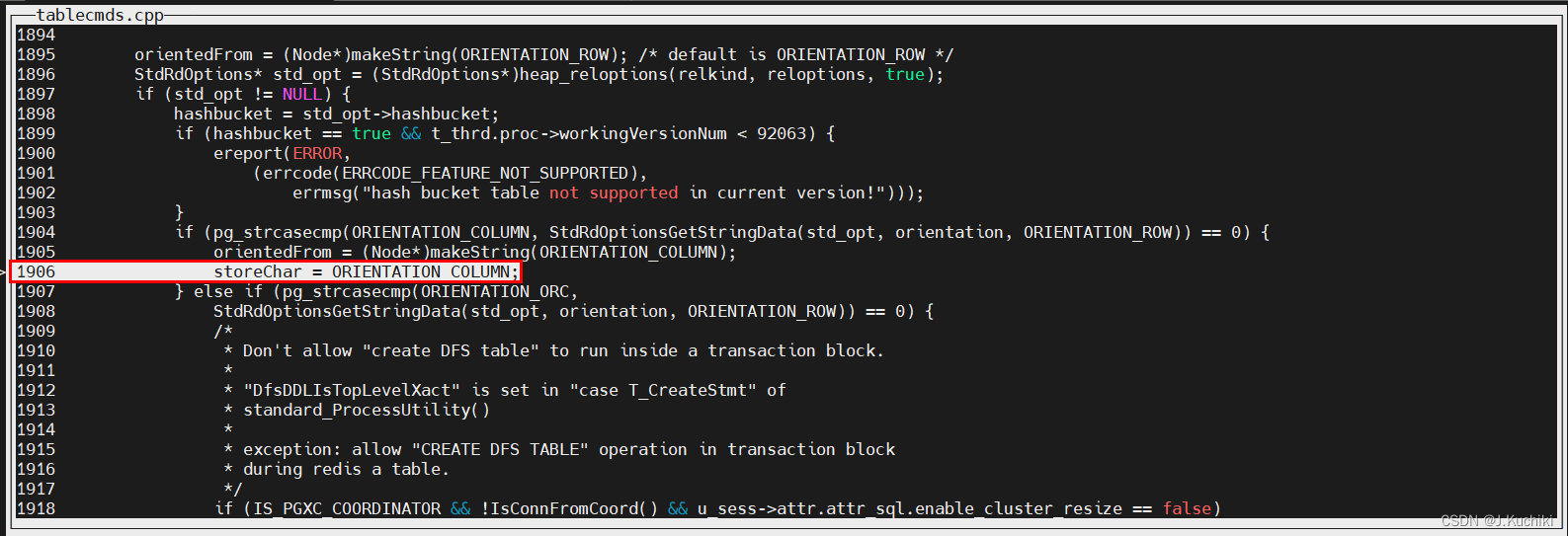
接着再来分析如下判断条件:
// Set kvtype to ATT_KV_UNDEFINED in row-oriented or column-oriented table.if (0 != pg_strcasecmp(storeChar, ORIENTATION_TIMESERIES)) {clear_kvtype_row_column(stmt);}
这个判断是在检查存储选项中的方向信息是否为 "TIMESERIES",如果不是的话,就执行一个函数 clear_kvtype_row_column(stmt) 来设置表的 kvtype 属性为 ATT_KV_UNDEFINED。
换句话说,当存储选项中的方向信息不是 "TIMESERIES" 时,将执行一些操作来将表的 kvtype 设置为未定义状态。
最后,再来分析如下判断条件:
if (0 == pg_strcasecmp(storeChar, ORIENTATION_COLUMN)) {CheckCStoreUnsupportedFeature(stmt);CheckCStoreRelOption(std_opt);ForbidToSetOptionsForColTbl(stmt->options);if (stmt->partTableState) {if (stmt->partTableState->rowMovement == ROWMOVEMENT_DISABLE) {ereport(NOTICE,(errmsg("disable row movement is invalid for column stored tables."" They always enable row movement between partitions.")));}/* always enable rowmovement for column stored tables */stmt->partTableState->rowMovement = ROWMOVEMENT_ENABLE;}} else if (0 == pg_strcasecmp(storeChar, ORIENTATION_TIMESERIES)) {/* check both support coloumn store and row store */CheckCStoreUnsupportedFeature(stmt);CheckCStoreRelOption(std_opt);if (stmt->partTableState) {if (stmt->partTableState->rowMovement == ROWMOVEMENT_DISABLE)ereport(NOTICE,(errmsg("disable row movement is invalid for timeseries stored tables."" They always enable row movement between partitions.")));/* always enable rowmovement for column stored tables */stmt->partTableState->rowMovement = ROWMOVEMENT_ENABLE;}if (relkind == RELKIND_RELATION) {/* only care heap relation. ignore foreign table and index relation */forbid_to_set_options_for_timeseries_tbl(stmt->options);}/* construct distribute keys using tstag if not specified */if (stmt->distributeby == NULL) {ListCell* cell = NULL;DistributeBy* newnode = makeNode(DistributeBy);List* colnames = NIL;newnode->disttype = DISTTYPE_HASH;foreach (cell, schema) {ColumnDef* colDef = (ColumnDef*)lfirst(cell);if (colDef->kvtype == ATT_KV_TAG && IsTypeDistributable(colDef->typname->typeOid)) {colnames = lappend(colnames, makeString(colDef->colname));}}if (list_length(colnames) == 0) {ereport(ERROR,(errcode(ERRCODE_INVALID_TABLE_DEFINITION),errmsg("No column can be used as distribution column.")));}newnode->colname = colnames;stmt->distributeby = newnode;/* if specified hidetag, add a hidden column as distribution column */} else if (stmt->distributeby->disttype == DISTTYPE_HIDETAG &&stmt->distributeby->colname == NULL) {bool has_distcol = false;ListCell* cell;foreach (cell, schema) {ColumnDef* colDef = (ColumnDef*)lfirst(cell);if (colDef->kvtype == ATT_KV_TAG && IsTypeDistributable(colDef->typname->typeOid)) {has_distcol = true;}}if (!has_distcol) {ereport(ERROR,(errcode(ERRCODE_INVALID_TABLE_DEFINITION),errmsg("No column can be used as distribution column.")));}ColumnDef* colDef = makeColumnDef(TS_PSEUDO_DIST_COLUMN, "char");colDef->kvtype = ATT_KV_HIDE;stmt->tableElts = lappend(stmt->tableElts, colDef);/* still use hash logic later */DistributeBy* distnode = stmt->distributeby;distnode->disttype = DISTTYPE_HASH;distnode->colname = lappend(distnode->colname, makeString(colDef->colname));ereport(LOG, (errmodule(MOD_TIMESERIES), errmsg("use implicit distribution column method.")));}} else {if (relkind == RELKIND_RELATION) {/* only care heap relation. ignore foreign table and index relation */ForbidToSetOptionsForRowTbl(stmt->options);}}
这段代码根据存储选项中的方向信息(storeChar)执行一系列操作。
- 如果存储选项的方向是
"COLUMN",则执行以下操作:
- 调用
CheckCStoreUnsupportedFeature(stmt),检查是否支持列存储的特性。- 调用
CheckCStoreRelOption(std_opt),检查列存储的关系选项。- 调用
ForbidToSetOptionsForColTbl(stmt->options),禁止为列存储表设置特定的选项。- 如果存在分区表状态
(stmt->partTableState),则根据分区表状态设置行移动属性为"ROWMOVEMENT_ENABLE",因为列存储表总是启用分区间的行移动。
- 如果存储选项的方向是
"TIMESERIES",则执行以下操作:
- 调用
CheckCStoreUnsupportedFeature(stmt),检查是否支持列存储的特性。- 调用
CheckCStoreRelOption(std_opt),检查列存储的关系选项。- 如果存在分区表状态
(stmt->partTableState),则根据分区表状态设置行移动属性为"ROWMOVEMENT_ENABLE"。- 如果表的类型是普通表
(relkind == RELKIND_RELATION),则禁止为时序存储表设置特定的选项。- 构建分布键使用时间戳标签列作为分布列,如果未指定分布键的话。
- 如果指定了隐藏标签
("HIDETAG")的分布方式,且未指定分布列,则添加一个隐藏列作为分布列。
- 如果存储选项的方向不是
"COLUMN"或"TIMESERIES",则执行以下操作:
- 如果表的类型是普通表
(relkind == RELKIND_RELATION),则禁止为行存储表设置特定的选项。
其次,我们进入到 CheckCStoreUnsupportedFeature 函数来看看吧,这个函数用于检查列存储表是否支持指定的特性,如果不支持则报告错误。
CheckCStoreUnsupportedFeature 函数源码如下:(路径:src/gausskernel/optimizer/commands/tablecmds.cpp)
// all unsupported features are checked and error reported here for cstore table
static void CheckCStoreUnsupportedFeature(CreateStmt* stmt)
{Assert(stmt);if (stmt->relation->relpersistence == RELPERSISTENCE_GLOBAL_TEMP) {ereport(ERROR,(errcode(ERRCODE_INVALID_TABLE_DEFINITION),errmsg("global temporary table can only support heap table")));}if (stmt->ofTypename)ereport(ERROR,(errcode(ERRCODE_FEATURE_NOT_SUPPORTED),errmsg("Unsupport feature"),errdetail("cstore/timeseries don't support relation defination ""with composite type using CREATE TABLE OF TYPENAME.")));if (stmt->inhRelations) {ereport(ERROR,(errcode(ERRCODE_FEATURE_NOT_SUPPORTED),errmsg("Unsupport feature"),errdetail("cstore/timeseries don't support relation defination with inheritance.")));}if (stmt->relation->schemaname != NULL &&IsSystemNamespace(get_namespace_oid(stmt->relation->schemaname, false))) {ereport(ERROR,(errcode(ERRCODE_FEATURE_NOT_SUPPORTED),errmsg("Unsupport feature"),errdetail("cstore/timeseries don't support relation defination with System namespace.")));}CheckPartitionUnsupported(stmt);// Check constraintsListCell* lc = NULL;foreach (lc, stmt->tableEltsDup) {Node* element = (Node*)lfirst(lc);/* check table-level constraints */if (IsA(element, Constraint) && !CSTORE_SUPPORT_CONSTRAINT(((Constraint*)element)->contype)) {ereport(ERROR,(errcode(ERRCODE_FEATURE_NOT_SUPPORTED),errmsg("column/timeseries store unsupport constraint \"%s\"",GetConstraintType(((Constraint*)element)->contype))));} else if (IsA(element, ColumnDef)) {List* colConsList = ((ColumnDef*)element)->constraints;ListCell* lc2 = NULL;/* check column-level constraints */foreach (lc2, colConsList) {Constraint* colCons = (Constraint*)lfirst(lc2);if (!CSTORE_SUPPORT_CONSTRAINT(colCons->contype)) {ereport(ERROR,(errcode(ERRCODE_FEATURE_NOT_SUPPORTED),errmsg("column/timeseries store unsupport constraint \"%s\"",GetConstraintType(colCons->contype))));}}}}
}
下面是函数中每个部分的解释:
- 首先,函数使用
Assert(stmt)确保传入的CreateStmt结构体非空。- 如果要创建的表是全局临时表
(stmt->relation->relpersistence == RELPERSISTENCE_GLOBAL_TEMP),则报告错误,因为列存储表不支持全局临时表。- 如果表的定义中使用了
CREATE TABLE OF TYPENAME,报告错误,因为列存储表不支持使用复合类型定义。- 如果表的定义使用了继承
(stmt->inhRelations),报告错误,因为列存储表不支持继承。- 如果表的模式名不为空且属于系统命名空间,报告错误,因为列存储表不支持在系统命名空间中定义。
- 调用
CheckPartitionUnsupported(stmt)检查分区相关的不支持特性。- 遍历
stmt->tableEltsDup中的每个元素(表元素,如列定义、约束等),检查是否存在不受支持的约束类型。如果存在不受支持的约束,报告错误。
- 针对表级约束,检查约束类型是否受支持。
- 针对列级约束,检查每个列的约束列表中的约束类型是否受支持。
其次,我们再来看看 CheckCStoreRelOption 函数,该函数主要检查 PARTIAL_CLUSTER_ROWS 是否小于 MAX_BATCHROW 的值。StdRdOptions 是一个用于存储关系选项的数据结构,它在代码中用于表示存储引擎的特定选项。
其源码如下:(路径:src/gausskernel/optimizer/commands/tablecmds.cpp)
void CheckCStoreRelOption(StdRdOptions* std_opt)
{Assert(std_opt);if (std_opt->partial_cluster_rows < std_opt->max_batch_rows && std_opt->partial_cluster_rows >= 0) {ereport(ERROR,(errcode(ERRCODE_INVALID_TABLE_DEFINITION),errmsg("PARTIAL_CLUSTER_ROWS cannot be less than MAX_BATCHROW."),errdetail("PARTIAL_CLUSTER_ROWS must be greater than or equal to MAX_BATCHROW."),errhint("PARTIAL_CLUSTER_ROWS is MAX_BATCHROW multiplied by an integer.")));}
}
以下是函数的解释:
- 首先,函数使用
Assert(std_opt)确保传入的StdRdOptions结构体非空。- 如果
PARTIAL_CLUSTER_ROWS的值小于MAX_BATCHROW并且大于等于0,报告错误。这是因为在列存储表中,PARTIAL_CLUSTER_ROWS表示部分数据块的行数,而MAX_BATCHROW表示每个批处理的最大行数。这两个参数应该满足PARTIAL_CLUSTER_ROWS >= MAX_BATCHROW的关系。
报告的错误信息包括:
"PARTIAL_CLUSTER_ROWS"不能小于"MAX_BATCHROW"。"PARTIAL_CLUSTER_ROWS"必须大于或等于"MAX_BATCHROW"。- 提示说明
"PARTIAL_CLUSTER_ROWS"是"MAX_BATCHROW"乘以一个整数。
了解完了函数,我们再分别来看一下函数中的以下两个函数
AlterTableCreateToastTable(rel_oid, toast_options, ((CreateStmt *)stmt)->oldToastNode);
AlterCStoreCreateTables(rel_oid, toast_options, (CreateStmt*)stmt);
其中,AlterTableCreateToastTable 函数的作用是为表创建 TOAST(The Oversized-Attribute Storage Technique)表,用于存储那些超过一定大小的大型列数据。TOAST 表存储的是被压缩和分割成块的列值,以优化数据库性能和存储空间的使用。
参数解释:
rel_oid:要创建 TOAST 表的主表的对象标识符(OID)。toast_options:创建TOAST表的选项,包括压缩、存储引擎等设置。((CreateStmt *)stmt)->oldToastNode:源表的 TOAST 表节点(如果存在的话),用于在执行ALTER TABLE操作时将现有的 TOAST 表与新创建的 TOAST 表进行合并。
AlterTableCreateToastTable 函数源码如下:(路径:src/common/backend/catalog/toasting.cpp)
/** AlterTableCreateToastTable* If the table needs a toast table, and doesn't already have one,* then create a toast table for it.** reloptions for the toast table can be passed, too. Pass (Datum) 0* for default reloptions.** We expect the caller to have verified that the relation is a table and have* already done any necessary permission checks. Callers expect this function* to end with CommandCounterIncrement if it makes any changes.*/
void AlterTableCreateToastTable(Oid relOid, Datum reloptions, List *filenodelist)
{Relation rel;bool rel_is_partitioned = check_rel_is_partitioned(relOid);if (!rel_is_partitioned) {/** Grab an exclusive lock on the target table, since we'll update its* pg_class tuple. This is redundant for all present uses, since caller* will have such a lock already. But the lock is needed to ensure that* concurrent readers of the pg_class tuple won't have visibility issues,* so let's be safe.*/rel = heap_open(relOid, AccessExclusiveLock);if (needs_toast_table(rel))(void)create_toast_table(rel, InvalidOid, InvalidOid, reloptions, false, filenodelist);} else {rel = heap_open(relOid, AccessShareLock);if (needs_toast_table(rel))(void)createToastTableForPartitionedTable(rel, reloptions, filenodelist);}heap_close(rel, NoLock);
}
在 AlterTableCreateToastTable 函数中, if (needs_toast_table(rel)) 判断的是是否需要为某个表创建 TOAST 表。其中,needs_toast_table 函数中有如下代码段:
// column-store relations don't need any toast tables.if (RelationIsColStore(rel))return false;
因为 TOAST 表的创建和维护会增加一些开销,而对于列存储表来说,通常已经具备了高效存储和压缩的特性,所以不像行存储表那样需要单独的 TOAST 表来处理大型列数据。
AlterCStoreCreateTables 函数的作用是为一个列存储表执行一些列存储特定的操作,主要包括以下几个方面:
- 创建 CStore 子表(Delta 表) : 对于列存储表,通常会有一个主表和一个或多个子表(如 Delta 表)。Delta 表用于存储新增和修改的数据,以便在之后的时间点将这些变更合并到主表中。这个函数可能会创建或配置 Delta 表。
- 配置存储选项: 列存储表可能有一些特定的存储选项,这些选项可能会影响数据的存储、压缩、索引等方面。函数可能会根据提供的参数进行相应的存储选项配置。
- 处理 TOAST 表: 尽管列存储表不需要创建 TOAST 表,但在某些情况下可能需要处理 TOAST 相关的选项,例如对于那些不同存储方式混合的列存储表
AlterCStoreCreateTables 函数源码如下所示:(路径:src/common/backend/catalog/cstore_ctlg.cpp)
/** AlterTableCreateDeltaTable* 如果是一个 ColStore 表,就应该调用这个函数。* 这个函数用于创建一个 Delta 表。*/
void AlterCStoreCreateTables(Oid relOid, Datum reloptions, CreateStmt* mainTblStmt)
{Relation rel;/** 获取目标表的排它锁,因为我们将会更新它的 pg_class 元组。* 这对于目前的所有使用情况来说都是多余的,因为调用者已经有了这样的锁。* 但是为了确保并发读取 pg_class 元组的其他进程不会出现可见性问题,我们保险起见加上这个锁。*/rel = heap_open(relOid, AccessExclusiveLock);/** Dfs 表将会使用 AlterDfsCreateTables 函数处理。*/if (!RelationIsCUFormat(rel)) {heap_close(rel, NoLock);return;}if (!RELATION_IS_PARTITIONED(rel)) {/* create_delta_table 函数完成所有工作 */// 用于创建 Delta 表的,Delta 表存储了列存储表中发生的数据变更(如插入、更新、删除操作)的信息,以便后续进行数据恢复或查询。(void)CreateDeltaTable(rel, reloptions, false, mainTblStmt);// 用于创建 CUDesc 表,也就是变更描述表,CUDesc 表用于记录列存储表中数据变更的信息,如插入、更新、删除的数据。(void)CreateCUDescTable(rel, reloptions, false);// 通过静态方法调用来创建列存储表的存储空间CStore::CreateStorage(rel, InvalidOid);} else {createCUDescTableForPartitionedTable(rel, reloptions);createDeltaTableForPartitionedTable(rel, reloptions, mainTblStmt);CreateStorageForPartition(rel);}heap_close(rel, NoLock);
}
这里重点看一下 CStore::CreateStorage ,CreateStorage 为 CStore 类中的静态方法 ,用来创建列存储表的存储空间,源码如下所示:(路径:src/gausskernel/storage/cstore/cstore_am.cpp)
/* DONT call in redo */
// 提醒不要在恢复(redo)过程中调用这个函数
void CStore::CreateStorage(Relation rel, Oid newRelFileNode)
{// 获取表的元组描述(Tuple Descriptor)。TupleDesc desc = RelationGetDescr(rel);// 获取表的属性数量。int nattrs = desc->natts;// 获取表的属性信息数组。Form_pg_attribute* attrs = desc->attrs;// 获取表的持久性信息,即表是持久性表还是临时表。char relpersistence = rel->rd_rel->relpersistence;// 获取表的关系文件节点信息。RelFileNode rd_node = rel->rd_node;// 如果 newRelFileNode 是有效的(即指定了新的关系文件节点),则将当前表的关系文件节点更新为新的关系文件节点。if (OidIsValid(newRelFileNode)) {// use the new filenode if *newRelFileNode* is valid.rd_node.relNode = newRelFileNode;}for (int i = 0; i < nattrs; i++) {// 如果当前属性已被标记为删除(attisdropped 为 true),则跳过此属性。if (attrs[i]->attisdropped)continue;// 获取当前属性的属性编号。int attrid = attrs[i]->attnum;// 创建一个 CFileNode 实例,用于表示关系文件节点和属性编号。CFileNode cnode(rd_node, attrid, MAIN_FORKNUM);// create cu file in disk.// 创建一个 CUStorage 实例,表示列存储单元(Column Unit)的存储。CUStorage* custorage = New(CurrentMemoryContext) CUStorage(cnode);Assert(custorage);// 调用 custorage 的 CreateStorage 方法来创建存储空间。它会在磁盘上创建相应的 CU 文件。custorage->CreateStorage(0, false);// 删除之前创建的 custorage 实例。DELETE_EX(custorage);// log and insert into the pending delete list.// 将关系文件节点、属性编号、持久性信息和表的拥有者信息传递给它,以记录创建存储空间的操作。CStoreRelCreateStorage(&rd_node, attrid, relpersistence, rel->rd_rel->relowner);}
}
调试信息如下所示:

这里我们对 Form_pg_attribute* attrs = desc->attrs; 稍作解析:
{attrelid = 24646, attname = {data = "state_id", '\000' <repeats 55 times>}, atttypid = 1042, attstattarget = -1, attlen = -1, attnum = 1, attndims = 0,attcacheoff = -1, atttypmod = 6, attbyval = false, attstorage = 120 'x', attalign = 105 'i', attnotnull = false, atthasdef = false, attisdropped = false,attislocal = true, attcmprmode = 127 '\177', attinhcount = 0, attcollation = 100, attkvtype = 0 '\000'}
| 参数 | 含义 |
|---|---|
| attrelid = 24646 | 表示这个属性所属的表的关系 ID。 |
| attname = {data = “state_id”, ‘\000’ <repeats 55 times>} | 表示属性的名称,这里是 “state_id”。 |
| atttypid = 1042 | 表示属性的数据类型的 OID。在这个例子中,OID 为 1042,对应的数据类型是字符类型。 |
| attstattarget = -1 | 表示在自动统计分析期间收集统计信息的目标值。在这里是 -1,表示未指定。 |
| attlen = -1 | 表示属性的长度(字节数)。在这里是 -1,表示长度是可变的。 |
| attnum = 1 | 表示属性的编号(从 1 开始)。在这里是 1。 |
| attndims = 0 | 表示属性的维度数目。在这里是 0,表示这是一个标量属性。 |
| attcacheoff = -1 | 表示属性在元组中的偏移量。在这里是 -1,表示未指定。 |
| atttypmod = 6 | 表示属性的类型修饰符。在这里是 6,具体含义取决于属性的数据类型。 |
| attbyval = false | 表示属性是否按值传递。在这里是 false,表示不是按值传递。 |
| attstorage = 120 ‘x’ | 表示属性的存储方式。在这里是 ‘x’,表示外部存储。 |
| attalign = 105 ‘i’ | 表示属性的对齐方式。在这里是 ‘i’,表示按照 int 类型的对齐方式。 |
| attnotnull = false | 表示属性是否可以为 NULL。在这里是 false,表示可以为 NULL。 |
| atthasdef = false | 表示属性是否有默认值。在这里是 false,表示没有默认值。 |
| attisdropped = false | 表示属性是否被标记为已删除。在这里是 false,表示没有被标记为删除。 |
| attislocal = true | 表示属性是否是本地属性。在这里是 true,表示是本表的属性。 |
| attcmprmode = 127 ‘\177’ | 表示属性的压缩模式。在这里是 127,具体含义取决于属性的数据类型和存储方式。 |
| attinhcount = 0 | 表示从父表继承的次数。在这里是 0,表示没有从父表继承。 |
| attcollation = 100 | 表示属性的排序规则的 OID。在这里是 100,对应的排序规则。 |
| attkvtype = 0 ‘\000’ | 表示属性的键值类型。在这里是 0,表示不是键值属性。 |
总结
到此,本文初步介绍了列存储创建表的大致流程,其中很多的细节可能并没有详细展开。此外,列存储所涉及的模块和相关知识也非常多,在后续的学习中会不断的跟进。
相关文章:

【OpenGauss源码学习 —— 列存储(创建表)】
列存储 什么是列存储?语法实现语法格式参数说明示例源码分析(创建表)语法层(Gram.y)子模块(utility.cpp) 总结 声明:本文的部分内容参考了他人的文章。在编写过程中,我们…...
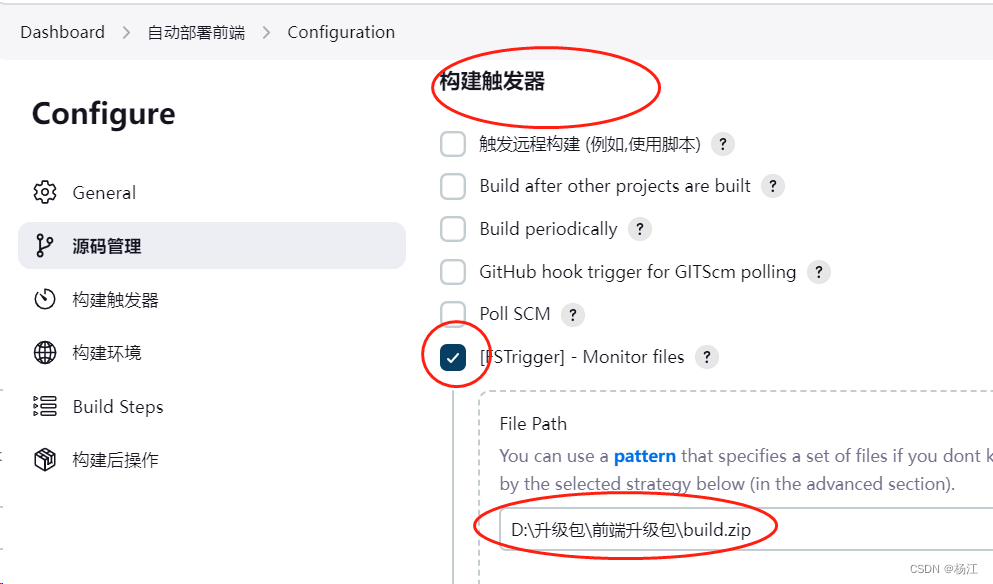
Jenkins 监控dist.zip文件内容发生变化 触发自动部署
为Jenkins添加plugin http://xx:xx/manage 创建一个任务 构建触发器 每3分钟扫描一次,发现指定文件build.zip文件的MD5发生变化后 触发任务...
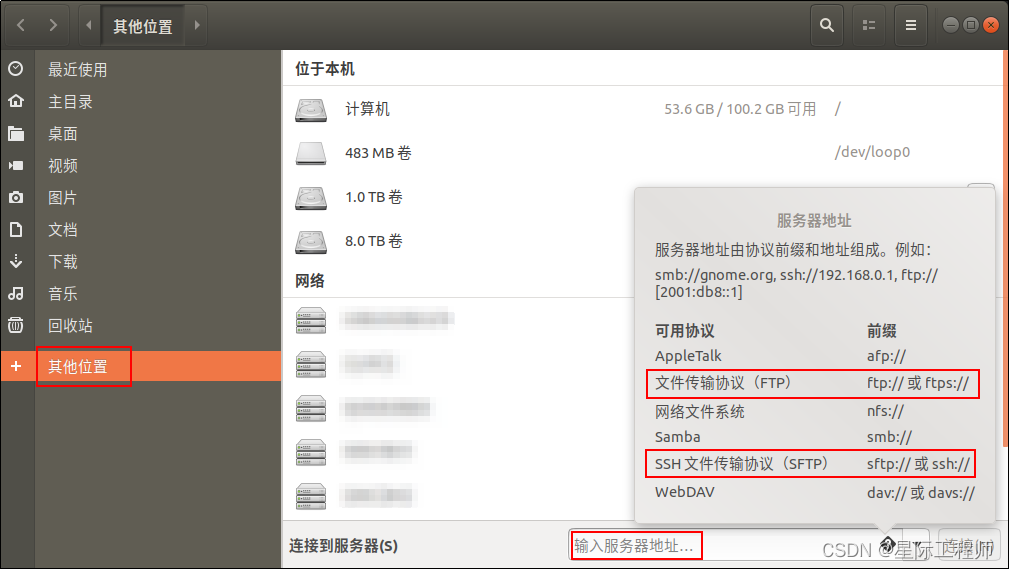
Linux系列讲解 —— FTP协议的应用
简单介绍一下FTP文件传输协议在linux系统中的应用。 目录 0. 基本概念1. FTP Server1.1 安装FTP Server1.2 FTP Server开启和关闭1.3 查看FTP Server是否开启1.4 FTP服务器配置 2. FTP Client2.1 lftp2.2 ftp2.3 sftp2.4 文件资源管理器集成的ftp和sftp 3. ftp常用命令 0. 基本…...

Rancher-RKE-install 部署k8s集群
一、为什么用Rancher-RKE-install 1.CNCF认证的k8s安装程序。 2.有中文文档。 二、安装步骤 1.下载Rancher-Rke的二进制包-下面是项目的地址 GitHub - rancher/rke: Rancher Kubernetes Engine (RKE), an extremely simple, lightning fast Kubernetes distrib…...

PHP8的正则表达式-PHP8知识详解
在网页程序的时候,经常会有查找符合某些复杂规则的字符串的需求。正则表达式就是描述这些规则的工具。 正则表达式是把文本或者字符串按照一定的规范或模型表示的方法,经常用于文本的匹配操作。 例如:我们在填写手机号码的时候,…...

SpringCloud实用篇7——深入elasticsearch
目录 1 数据聚合1.1 聚合的种类1.2 DSL实现聚合1.2.1 Bucket聚合语法1.2.2 聚合结果排序1.2.3 限定聚合范围1.2.4 Metric聚合语法1.2.5.小结 1.3 RestAPI实现聚合1.3.1 API语法1.3.2 业务需求1.3.3 业务实现 2 自动补全2.1 拼音分词器2.2 自定义分词器2.3 自动补全查询2.4 实现…...

uni-app 经验分享,从入门到离职(二)—— tabBar 底部导航栏实战篇
文章目录 📋前言⏬关于专栏 🎯关于小程序 tabbar 的一些知识🎯创建一个基本的 tabBar📝最后 📋前言 这篇文章的内容主题是关于小程序的 tabBar 底部导航栏的入门使用和实战技巧。通过上一篇文章的基础,我们…...
:内存区域)
Java虚拟机(JVM):内存区域
一、内存区域介绍 Java虚拟机(JVM)内存可以分为以下几个区域: 程序计数器(Program Counter Register):用于记录当前线程执行的字节码指令的地址,属于线程私有的区域。在任意时刻,一…...
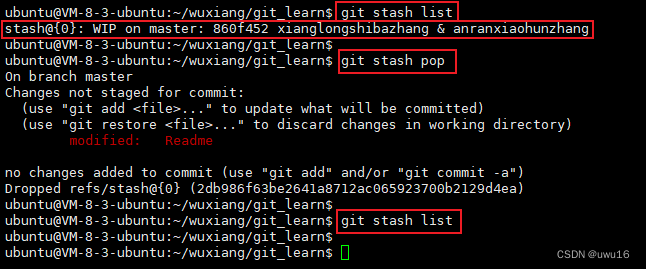
11 - git stash 开发中临时加塞了紧急任务怎么处理
查看所有文章链接:(更新中)GIT常用场景- 目录 文章目录 开发中临时加塞了紧急任务怎么处理 开发中临时加塞了紧急任务怎么处理 当你此时工作区已经修改了 Readme 文件,然后突然需要解决其他问题(紧急问题、新任务&…...

高效的WMS系统手持盘点方案
WMS系统手持盘点就是指利用WMS系统支持的手持式电子盘点设备进行库存盘点的方式。 具体来说: - 手持盘点设备是一种小型的电子设备,具有移动条形码扫描功能,可以实时与WMS系统联通。 - WMS系统利用手持设备,可以给仓储人员下发具体的盘点任务,例如需要盘点的货位、商品等信息…...

Oracle分页技术
1、使用两层嵌套 SELECT *FROM (SELECT A.*, ROWNUM RNFROM (SELECT * FROM edw_t100_bal_all) AWHERE ROWNUM < 40)WHERE RN > 21; 2、使用between..and.. SELECT *FROM (SELECT A.*, ROWNUM RN FROM (SELECT * FROM edw_t100_bal_all) A)WHERE RN between 21 and 40…...

2023-08-15 Untiy进阶 C#知识补充6——C#7主要功能与语法
文章目录 一、字面值改进二、out 内部声明 / 弃元三、ref 返回值四、本地函数五、抛出表达式六、元组七、模式匹配 注意:在此仅提及 Unity 开发中会用到的一些功能和特性,对于不适合在 Unity 中使用的内容会忽略。 C# 7 对应 Unity 版本࿱…...
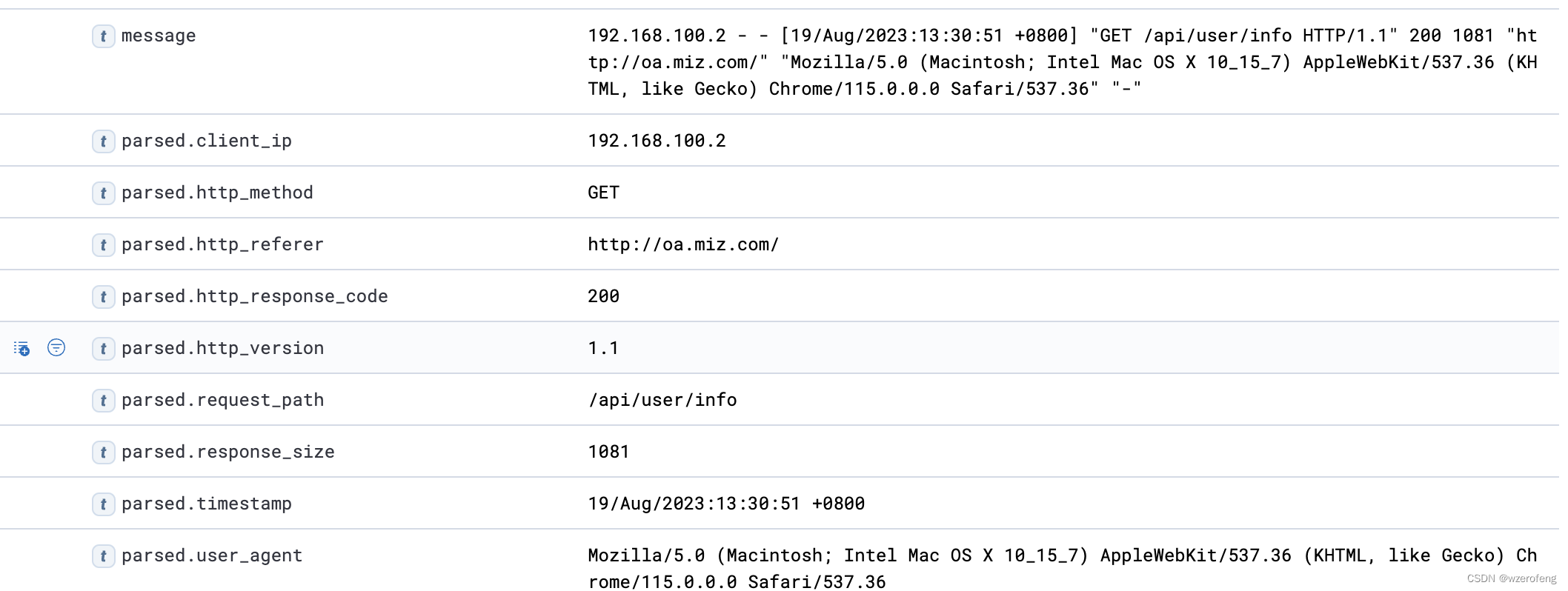
logstash配置文件
input { kafka { topics > “xxxx” bootstrap_servers > “ip:port” auto_offset_reset > “xxxx” group_id > “xxxx” consumer_threads > 3 codec > “json” } } filter { grok { match > { “message” > ‘%{IP:client_ip} - - [%{HTTPDATE:…...
)
docker搭建lnmp(nginx+mysql57+php7.4)
docker搭建lnmp(nginxmysql57php7.4) 1. 准备工作 docker安装 $ sudo yum update $ sudo sudo yum install -y yum-utils device-mapper-persistent-data lvm2 $ sudo yum-config-manager --add-repo http://mirrors.aliyun.com/docker-ce/linux/centos/docker-ce.repo $ sudo…...
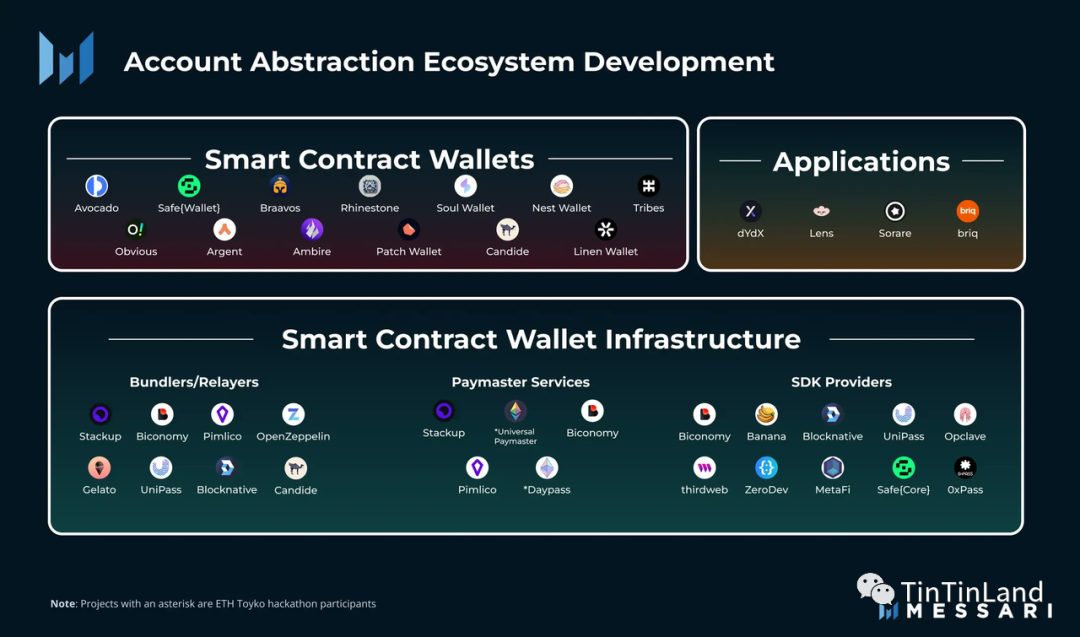
专访 BlockPI:共建账户抽象未来的新一代 RPC 基础设施
在传统 RPC 服务板块上,开发者一直饱受故障风险、运行环境混乱等难题的折磨。实现 RPC 服务的去中心化,且保持成本优势和可扩展性,始终是区块链基础设施建设的重要命题之一。从 2018 年观察中心化 RPC 供应商服务现状开始,BlockPI…...

js fetch请求中断的几种方式
1、通过AbortController 这是官方标准手段,真正意义的阻止请求(不支持ie) 后端接口设置的两秒返回数据 function myFetch() {const controller new AbortController();const signal controller.signal;fetch(http://localhost:3000/aaa/…...

Python自动化实战之使用Selenium进行Web自动化详解
概要 为了完成一项重复的任务,你需要在网站上进行大量的点击和操作,每次都要浪费大量的时间和精力。Python的Selenium库就可以自动化完成这些任务。 在本篇文章中,我们将会介绍如何使用Python的Selenium库进行Web自动化,以及如何…...

“之江数据安全治理论坛”暨《浙江省汽车数据处理活动规定(专家建议稿)》研讨会顺利召开
研讨会主题 8月10日,“之江数据安全治理论坛”暨《浙江省汽车数据处理活动规定(专家建议稿)》研讨会在浙江大学计算机创新技术研究院举办。 本次研讨会的主题聚焦于“智能网联汽车的数据安全与数据合规”,邀请行业主管部门和数据…...

消息中间件面试题
异步发送(验证码、短信、邮件…) MYSQL和Redis,ES之间的数据同步 分布式事务 削峰填谷 RabbitMQ如何保证消息不丢失? 开启生产者确认机制,确保生产者的消息能到达队列 开启持久化功能,确保消息未消费前在队列中不会丢失 开启消费…...

麻辣烫数据可视化,麻辣烫市场将持续蓬勃发展
麻辣烫,这道源自中国的美食,早已成为人们生活中不可或缺的一部分。它独特的香辣口味,让人忍不住每每流连忘返。与人们的关系,简直如同挚友一般。每当寒冷的冬日或疲惫的时刻,麻辣烫总是悄然走进人们的心房,…...

【杂谈】-递归进化:人工智能的自我改进与监管挑战
递归进化:人工智能的自我改进与监管挑战 文章目录 递归进化:人工智能的自我改进与监管挑战1、自我改进型人工智能的崛起2、人工智能如何挑战人类监管?3、确保人工智能受控的策略4、人类在人工智能发展中的角色5、平衡自主性与控制力6、总结与…...

逻辑回归:给不确定性划界的分类大师
想象你是一名医生。面对患者的检查报告(肿瘤大小、血液指标),你需要做出一个**决定性判断**:恶性还是良性?这种“非黑即白”的抉择,正是**逻辑回归(Logistic Regression)** 的战场&a…...

MySQL 隔离级别:脏读、幻读及不可重复读的原理与示例
一、MySQL 隔离级别 MySQL 提供了四种隔离级别,用于控制事务之间的并发访问以及数据的可见性,不同隔离级别对脏读、幻读、不可重复读这几种并发数据问题有着不同的处理方式,具体如下: 隔离级别脏读不可重复读幻读性能特点及锁机制读未提交(READ UNCOMMITTED)允许出现允许…...

练习(含atoi的模拟实现,自定义类型等练习)
一、结构体大小的计算及位段 (结构体大小计算及位段 详解请看:自定义类型:结构体进阶-CSDN博客) 1.在32位系统环境,编译选项为4字节对齐,那么sizeof(A)和sizeof(B)是多少? #pragma pack(4)st…...

可靠性+灵活性:电力载波技术在楼宇自控中的核心价值
可靠性灵活性:电力载波技术在楼宇自控中的核心价值 在智能楼宇的自动化控制中,电力载波技术(PLC)凭借其独特的优势,正成为构建高效、稳定、灵活系统的核心解决方案。它利用现有电力线路传输数据,无需额外布…...

线程与协程
1. 线程与协程 1.1. “函数调用级别”的切换、上下文切换 1. 函数调用级别的切换 “函数调用级别的切换”是指:像函数调用/返回一样轻量地完成任务切换。 举例说明: 当你在程序中写一个函数调用: funcA() 然后 funcA 执行完后返回&…...
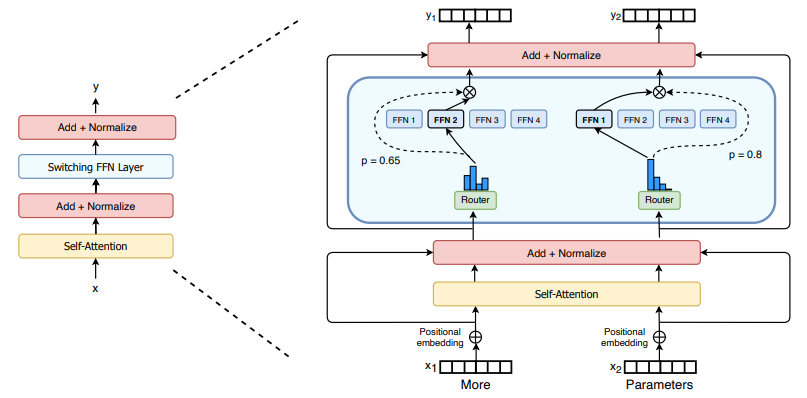
(二)TensorRT-LLM | 模型导出(v0.20.0rc3)
0. 概述 上一节 对安装和使用有个基本介绍。根据这个 issue 的描述,后续 TensorRT-LLM 团队可能更专注于更新和维护 pytorch backend。但 tensorrt backend 作为先前一直开发的工作,其中包含了大量可以学习的地方。本文主要看看它导出模型的部分&#x…...

spring:实例工厂方法获取bean
spring处理使用静态工厂方法获取bean实例,也可以通过实例工厂方法获取bean实例。 实例工厂方法步骤如下: 定义实例工厂类(Java代码),定义实例工厂(xml),定义调用实例工厂ÿ…...

C# SqlSugar:依赖注入与仓储模式实践
C# SqlSugar:依赖注入与仓储模式实践 在 C# 的应用开发中,数据库操作是必不可少的环节。为了让数据访问层更加简洁、高效且易于维护,许多开发者会选择成熟的 ORM(对象关系映射)框架,SqlSugar 就是其中备受…...

智能分布式爬虫的数据处理流水线优化:基于深度强化学习的数据质量控制
在数字化浪潮席卷全球的今天,数据已成为企业和研究机构的核心资产。智能分布式爬虫作为高效的数据采集工具,在大规模数据获取中发挥着关键作用。然而,传统的数据处理流水线在面对复杂多变的网络环境和海量异构数据时,常出现数据质…...
